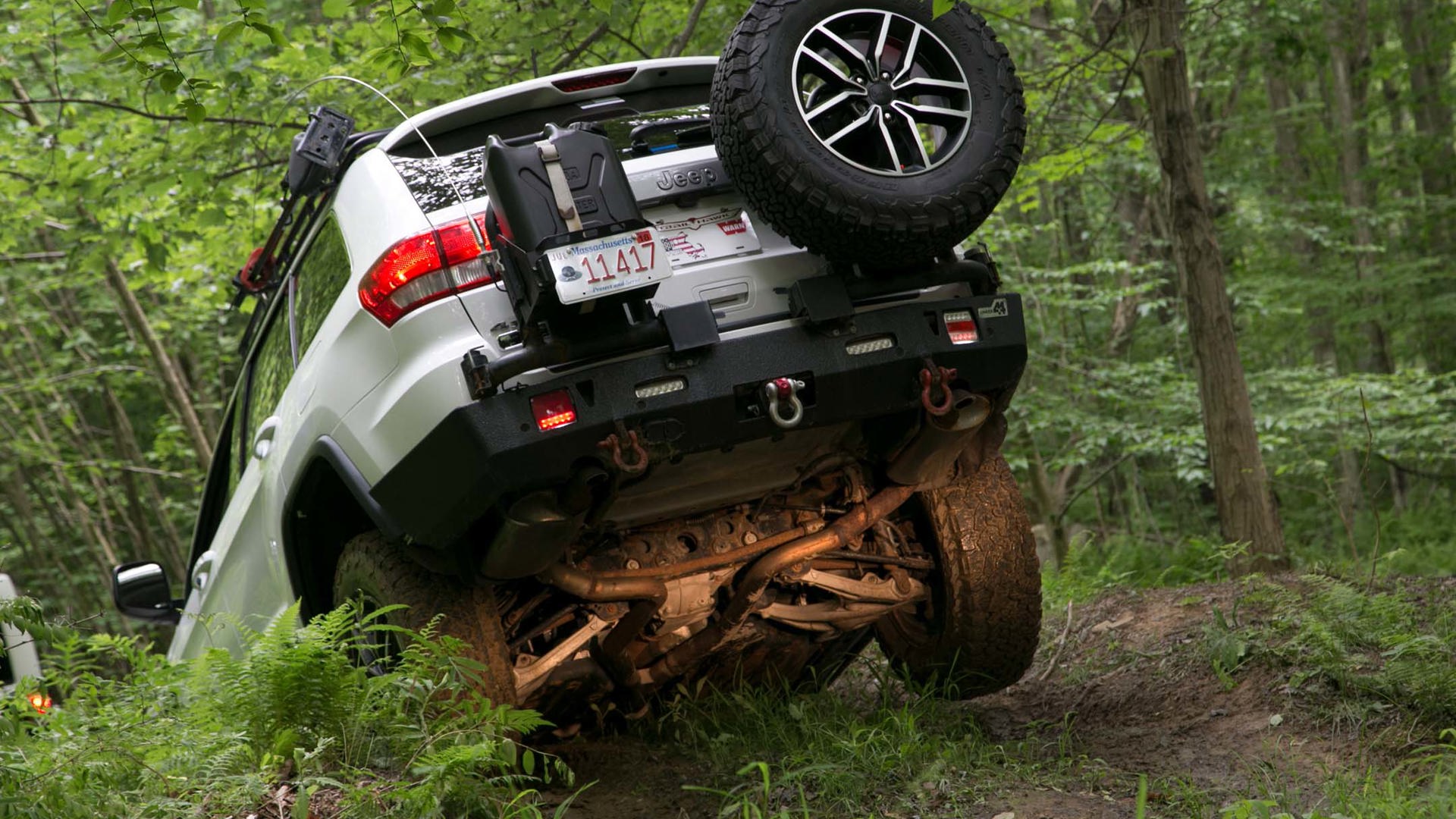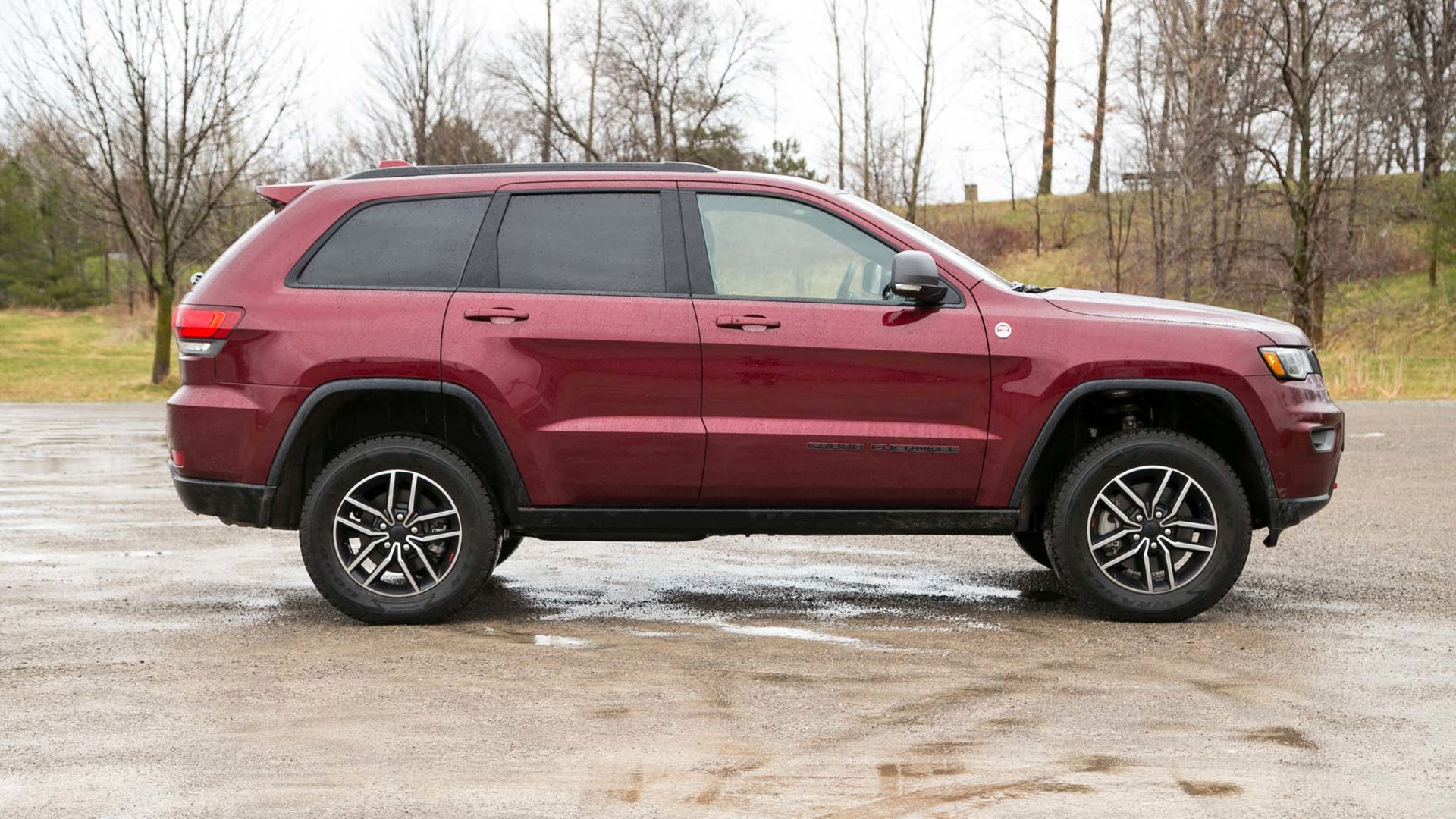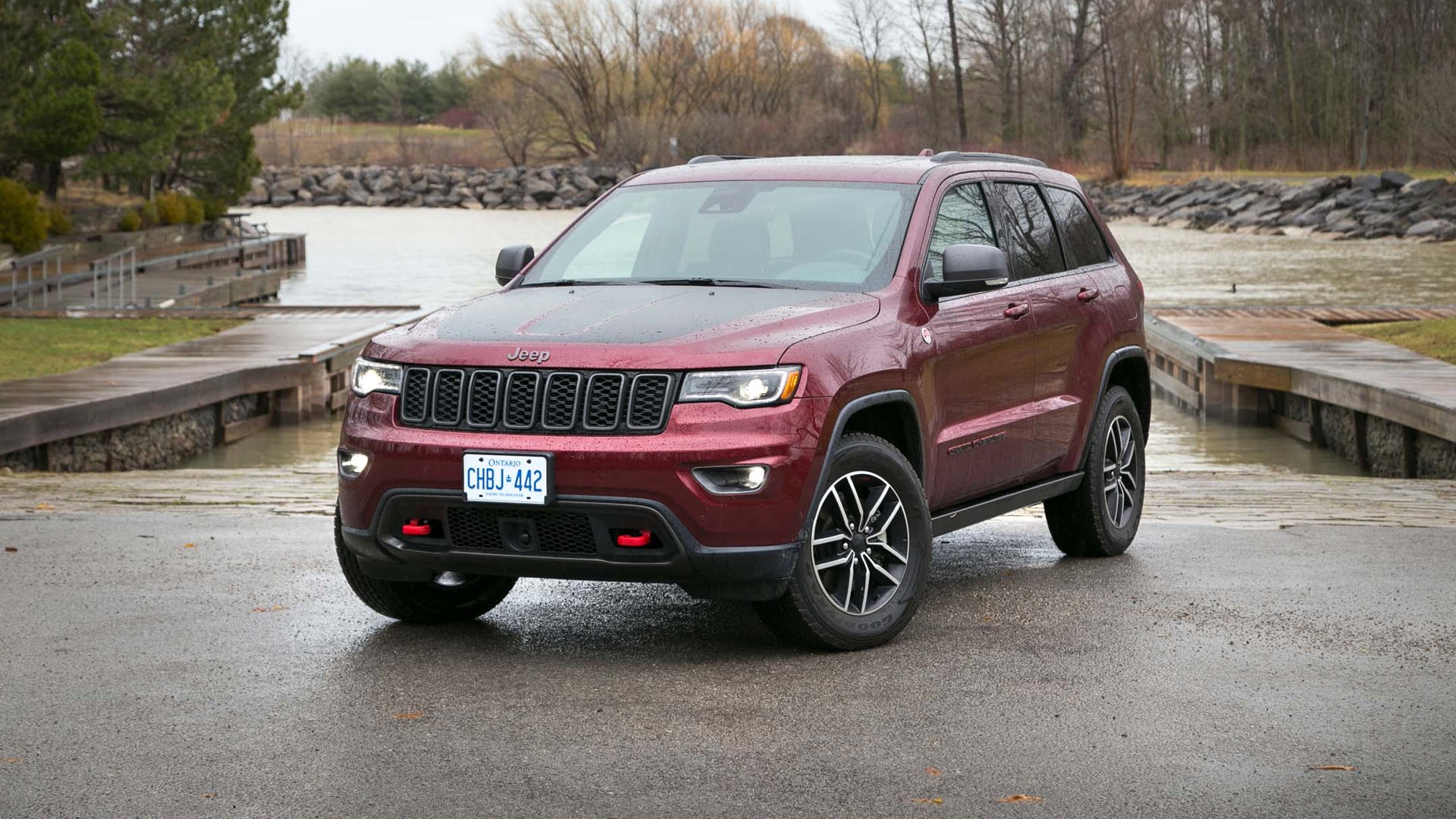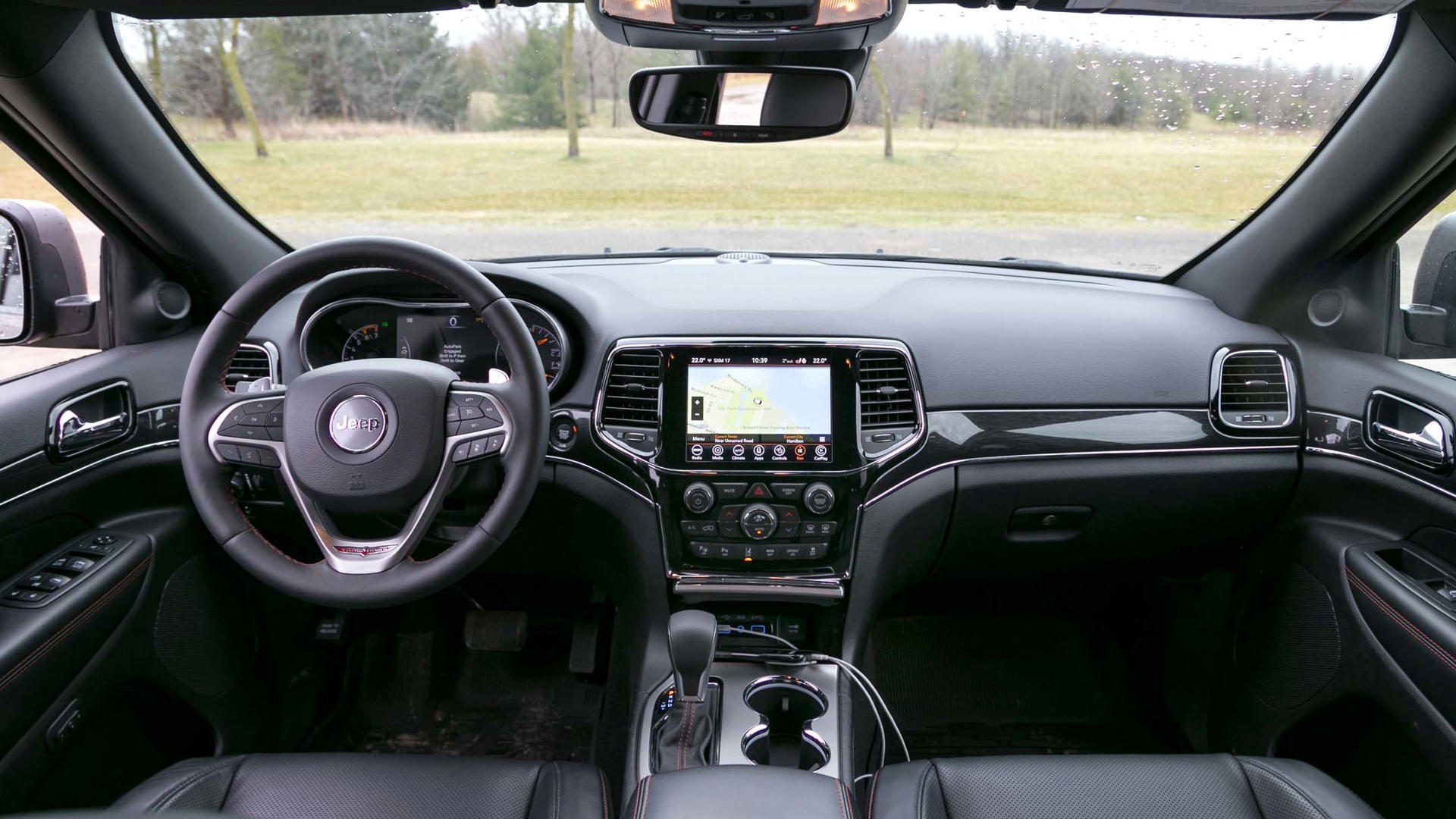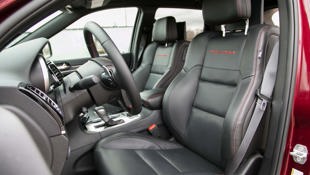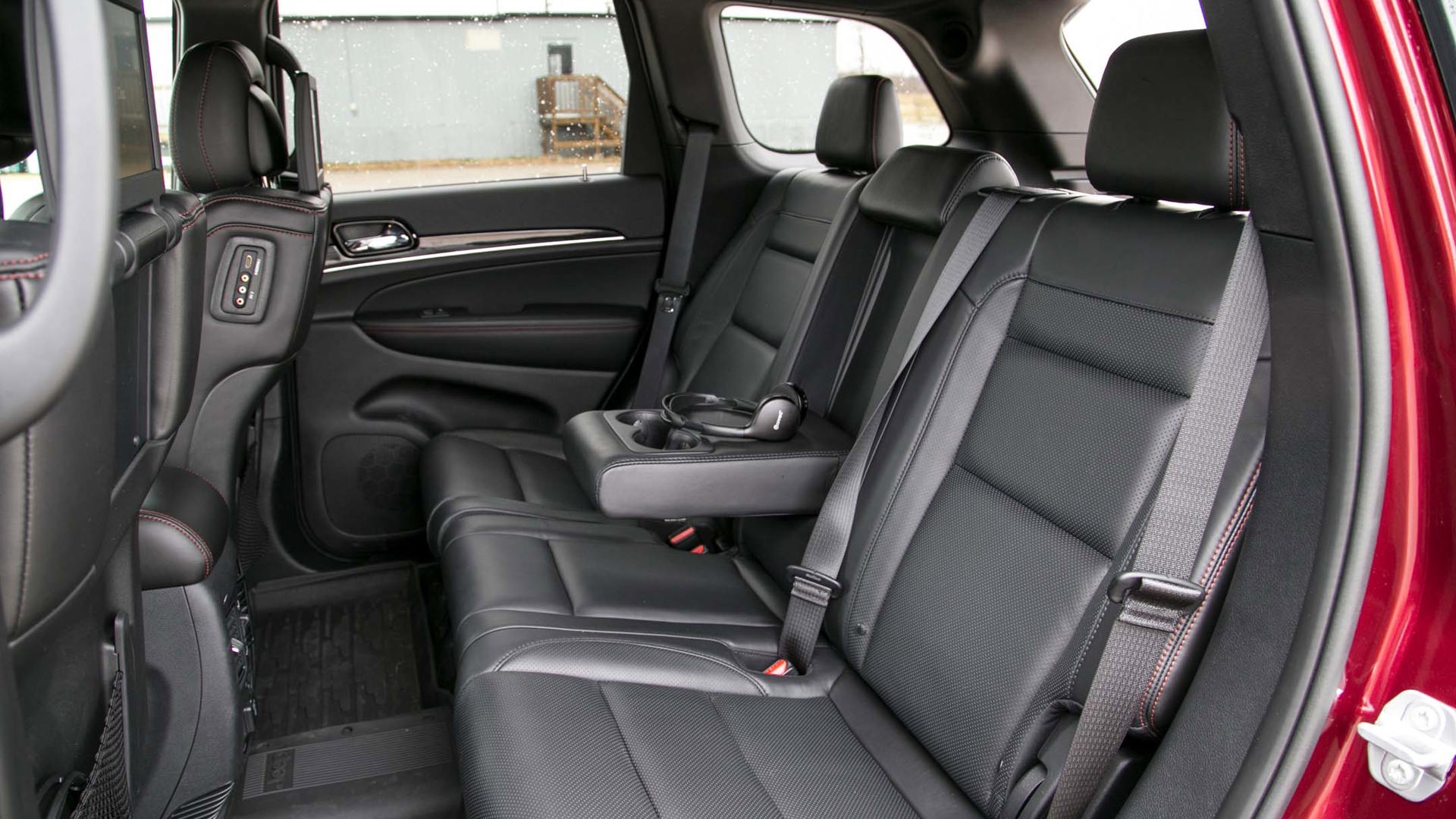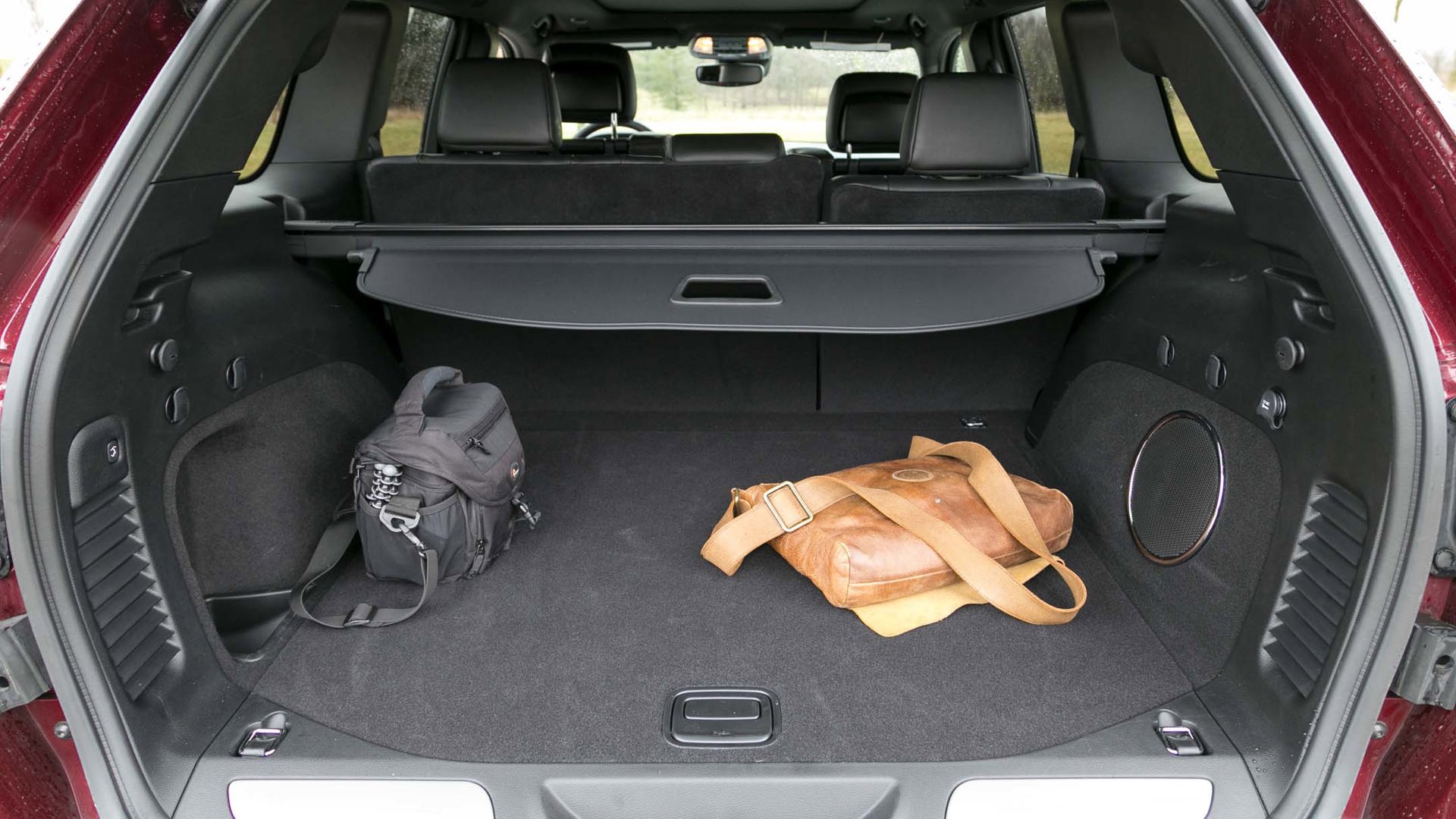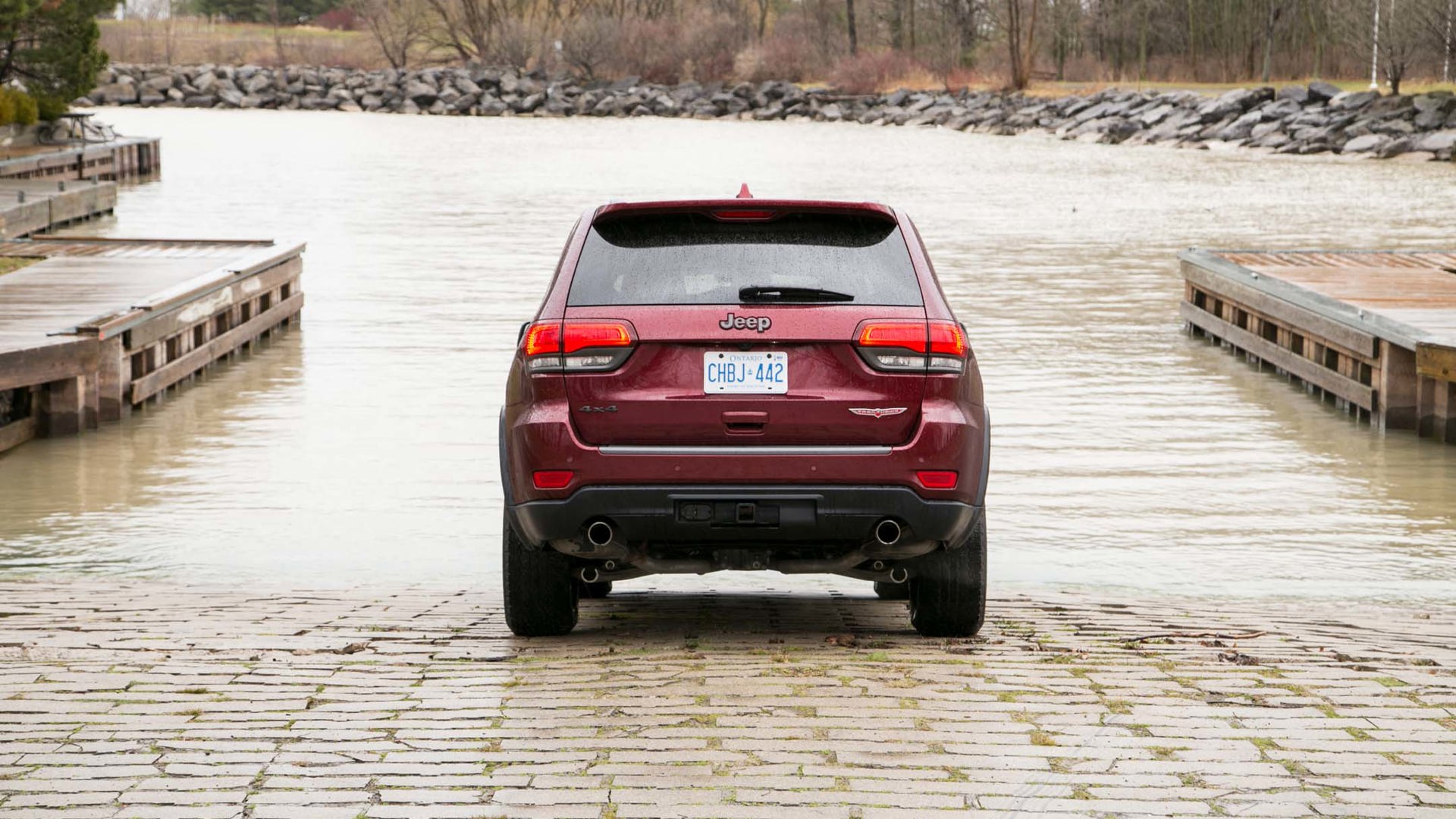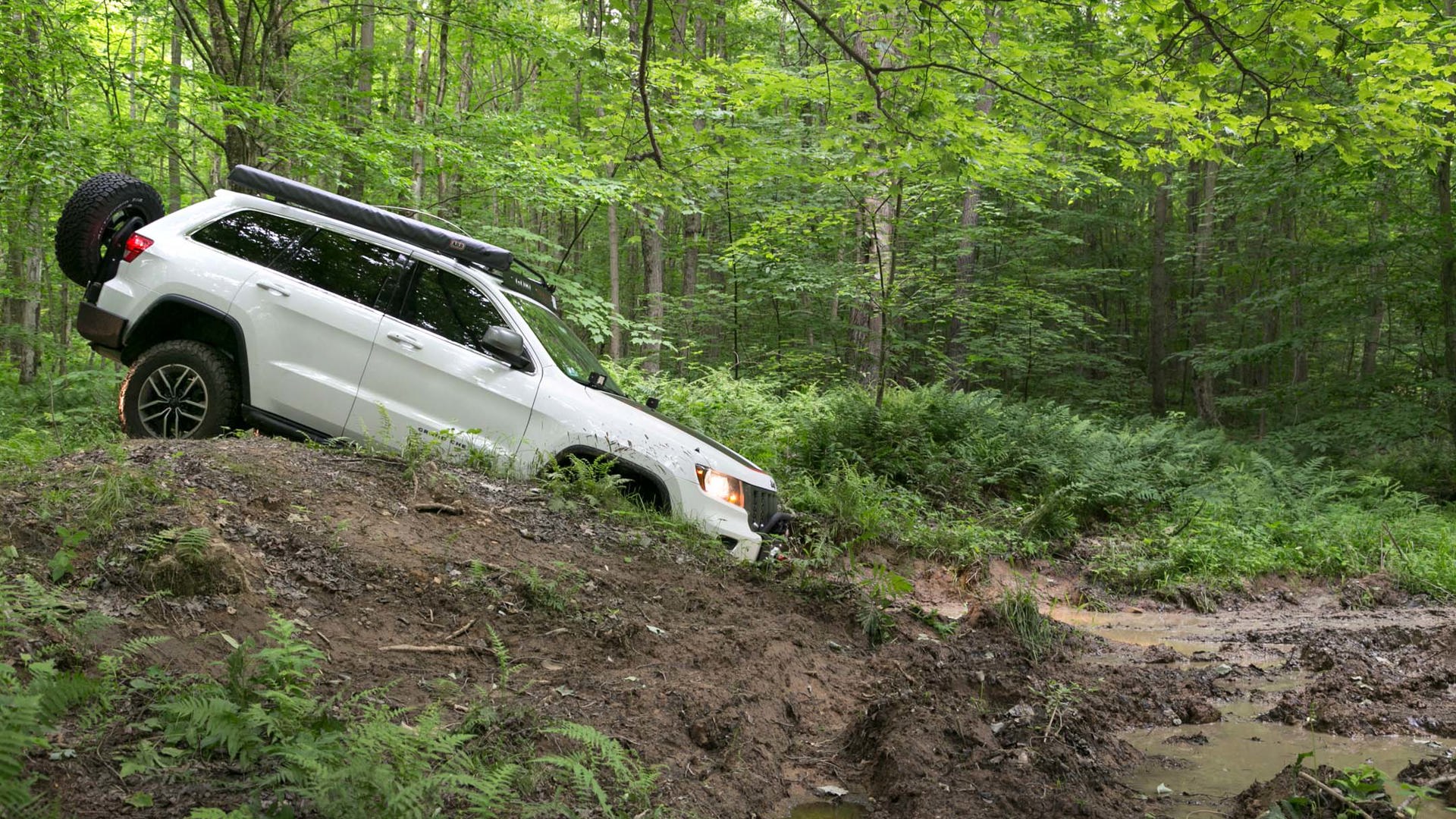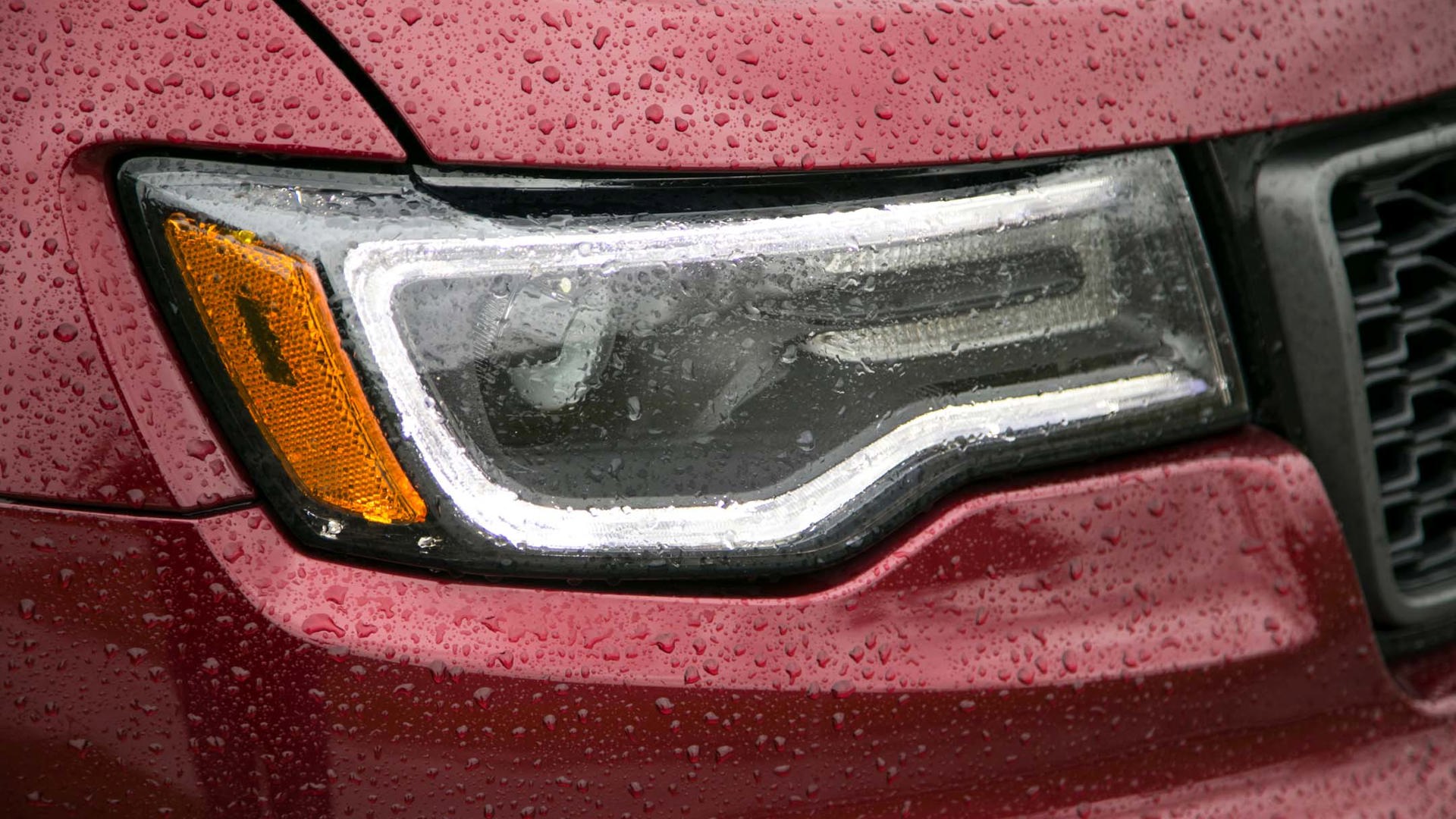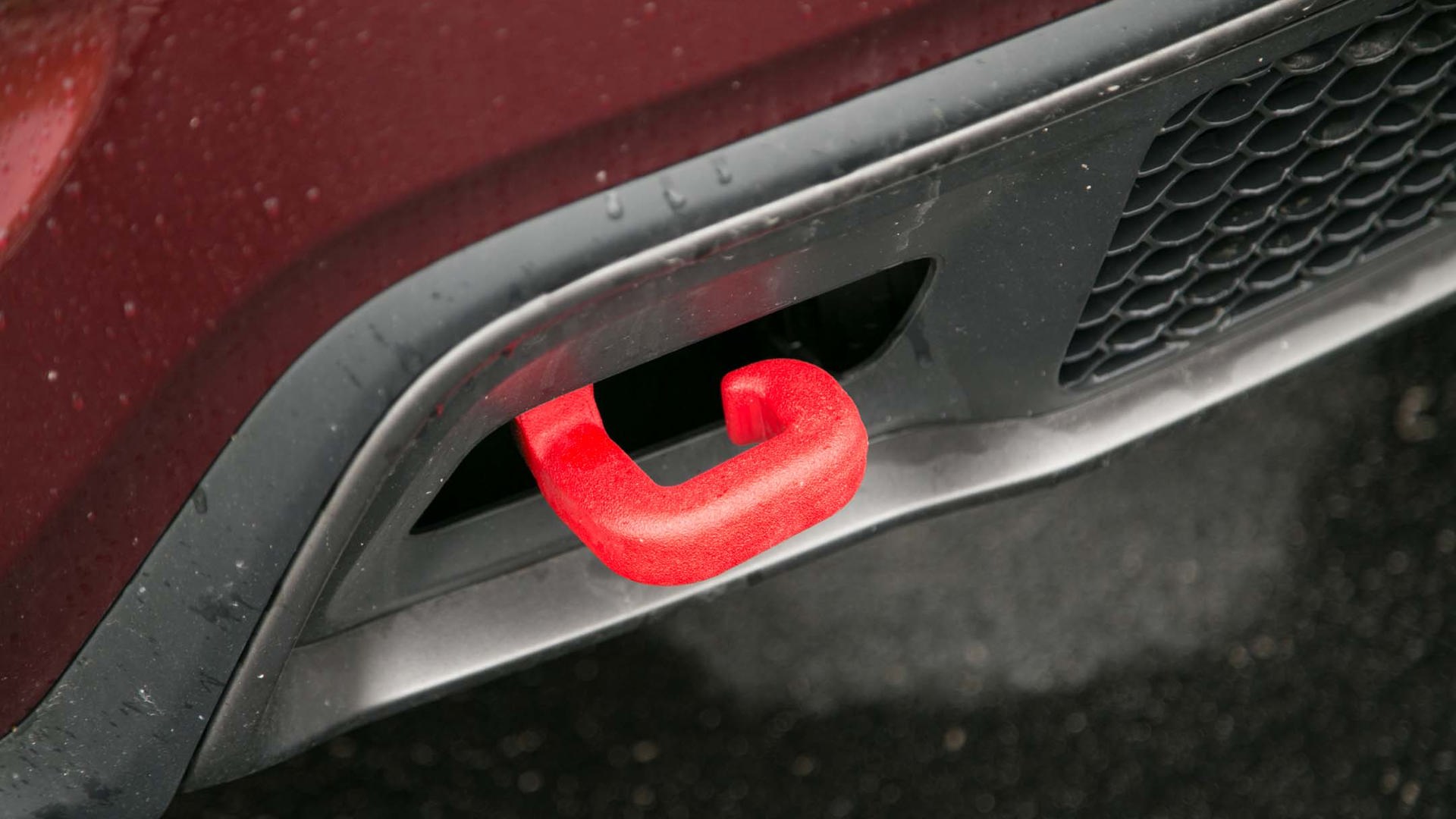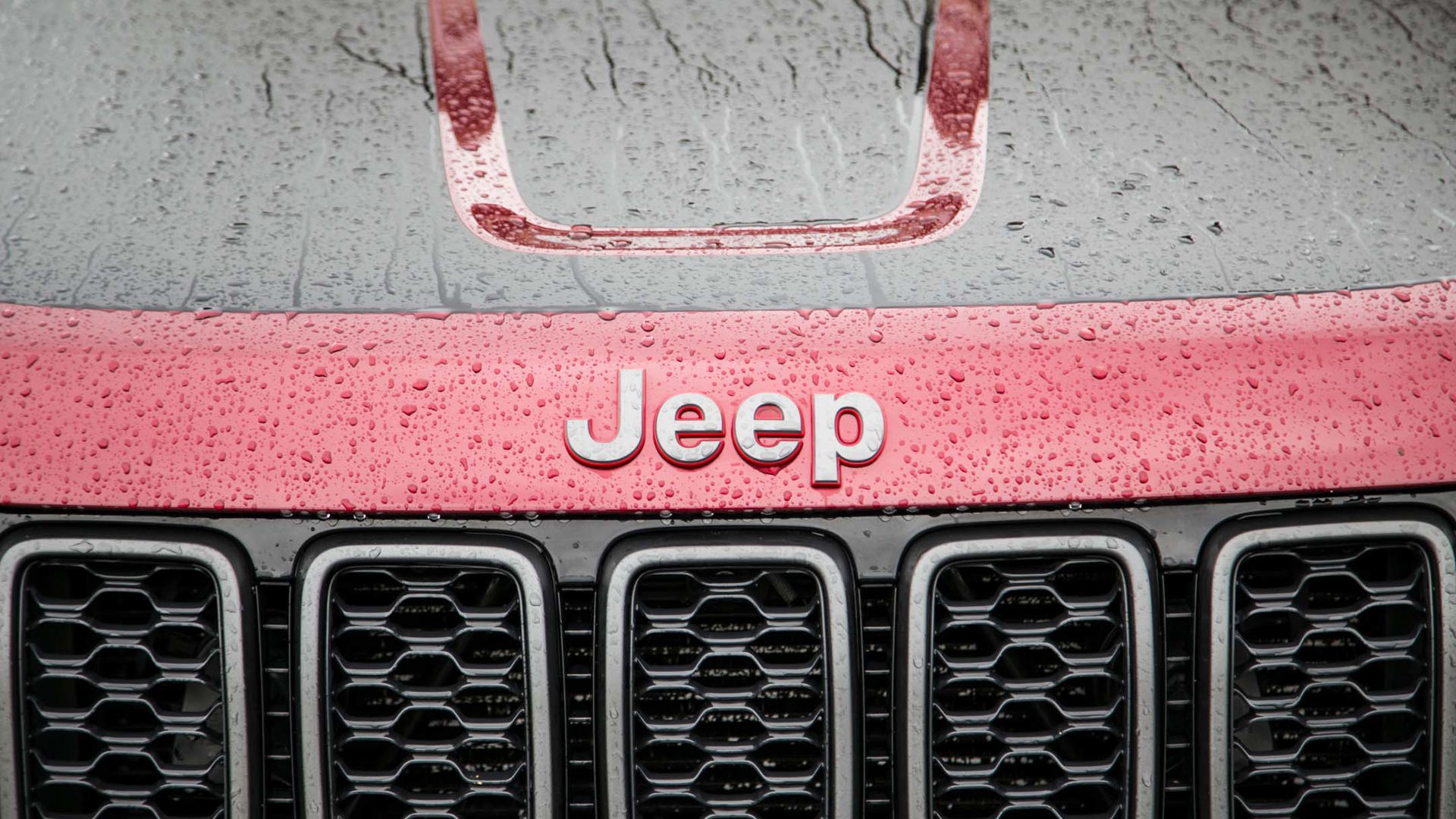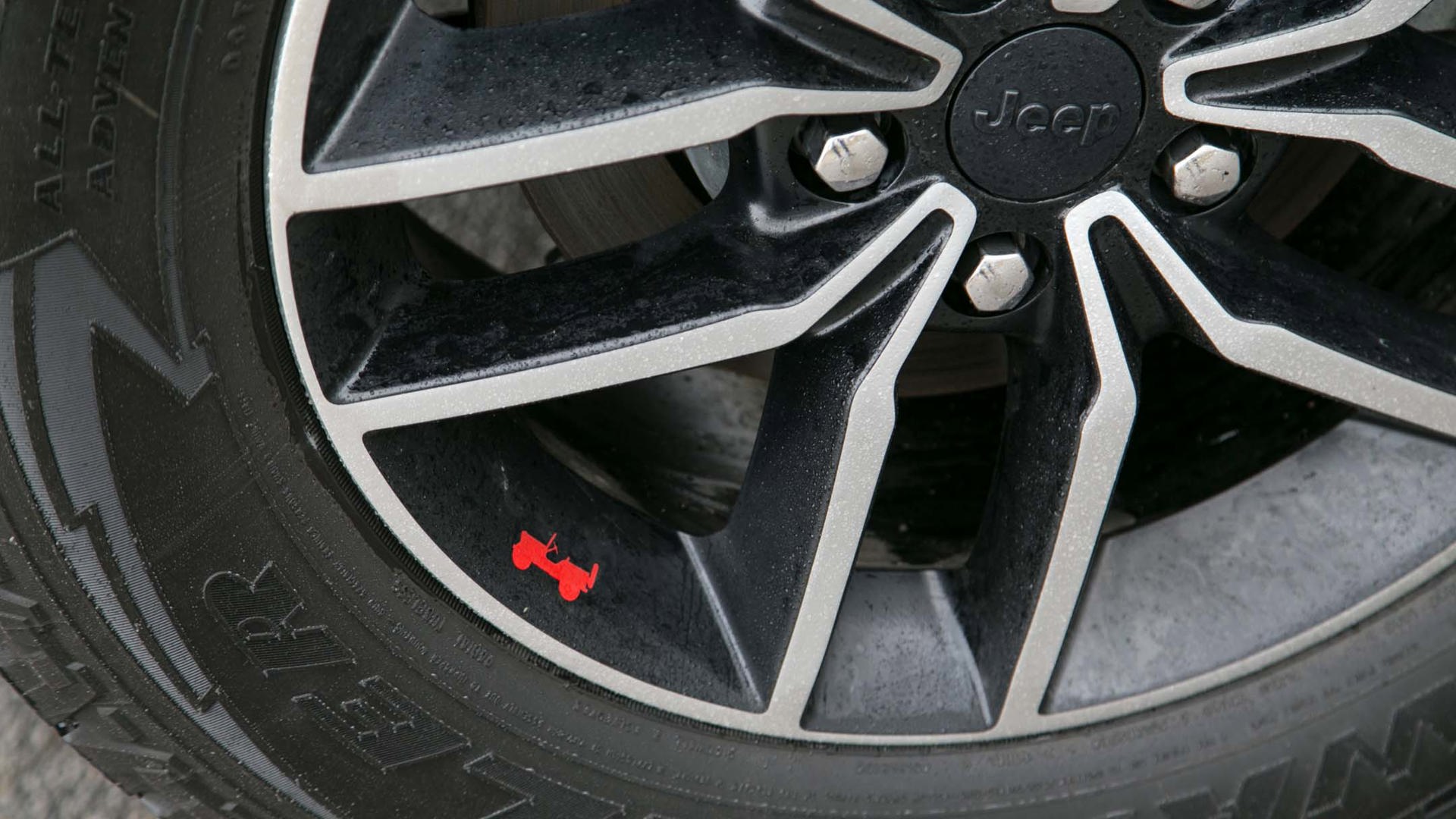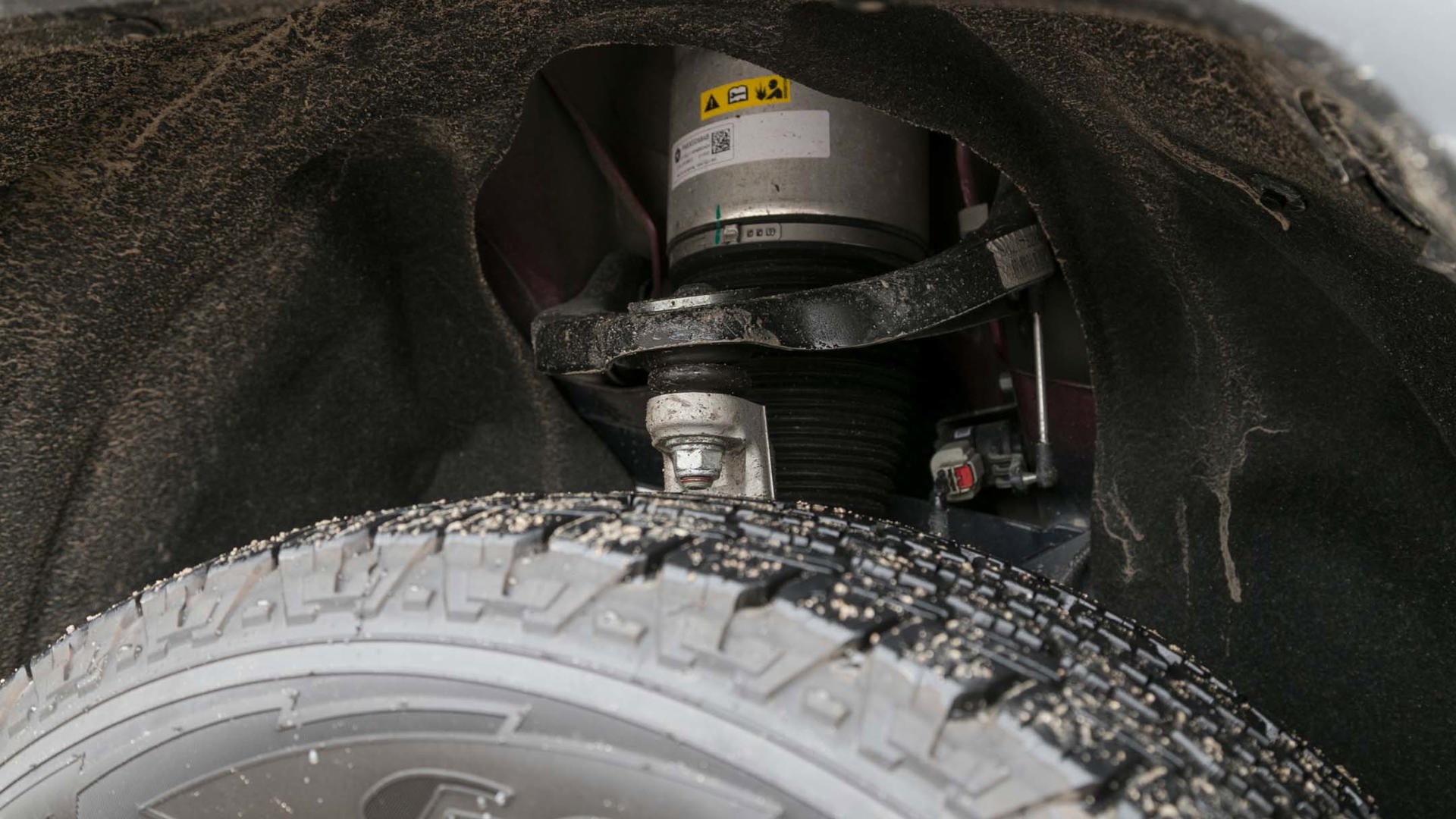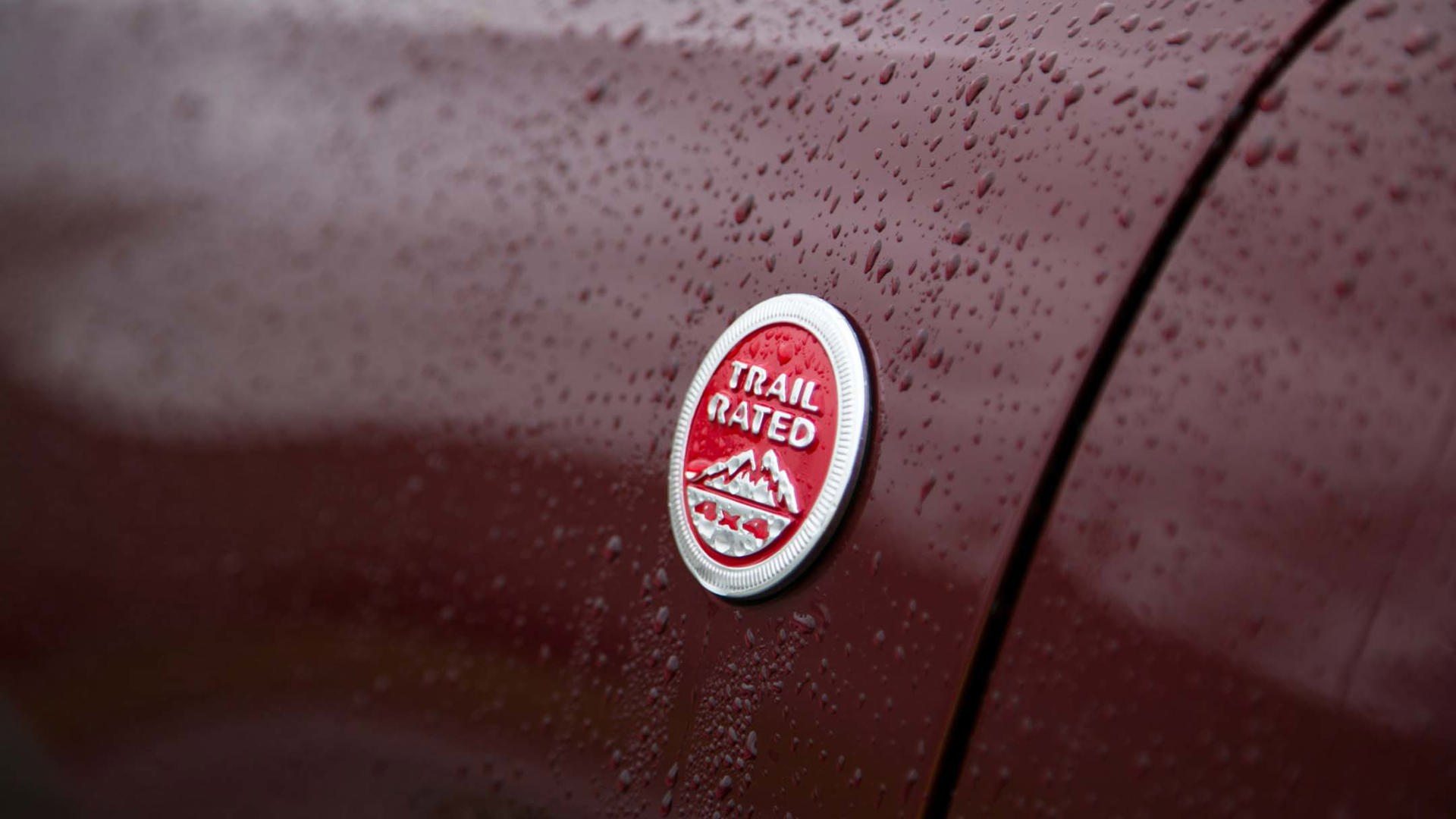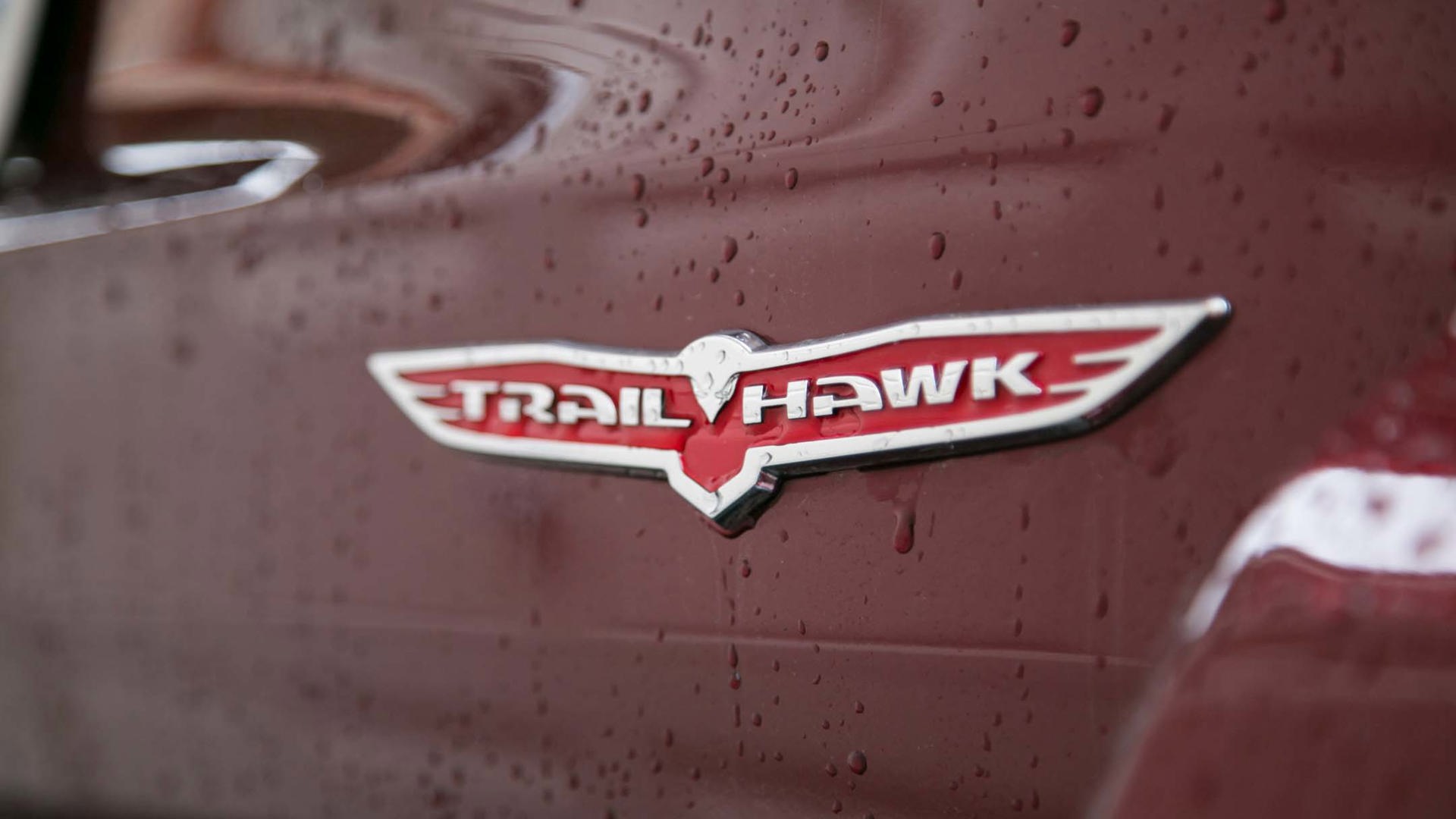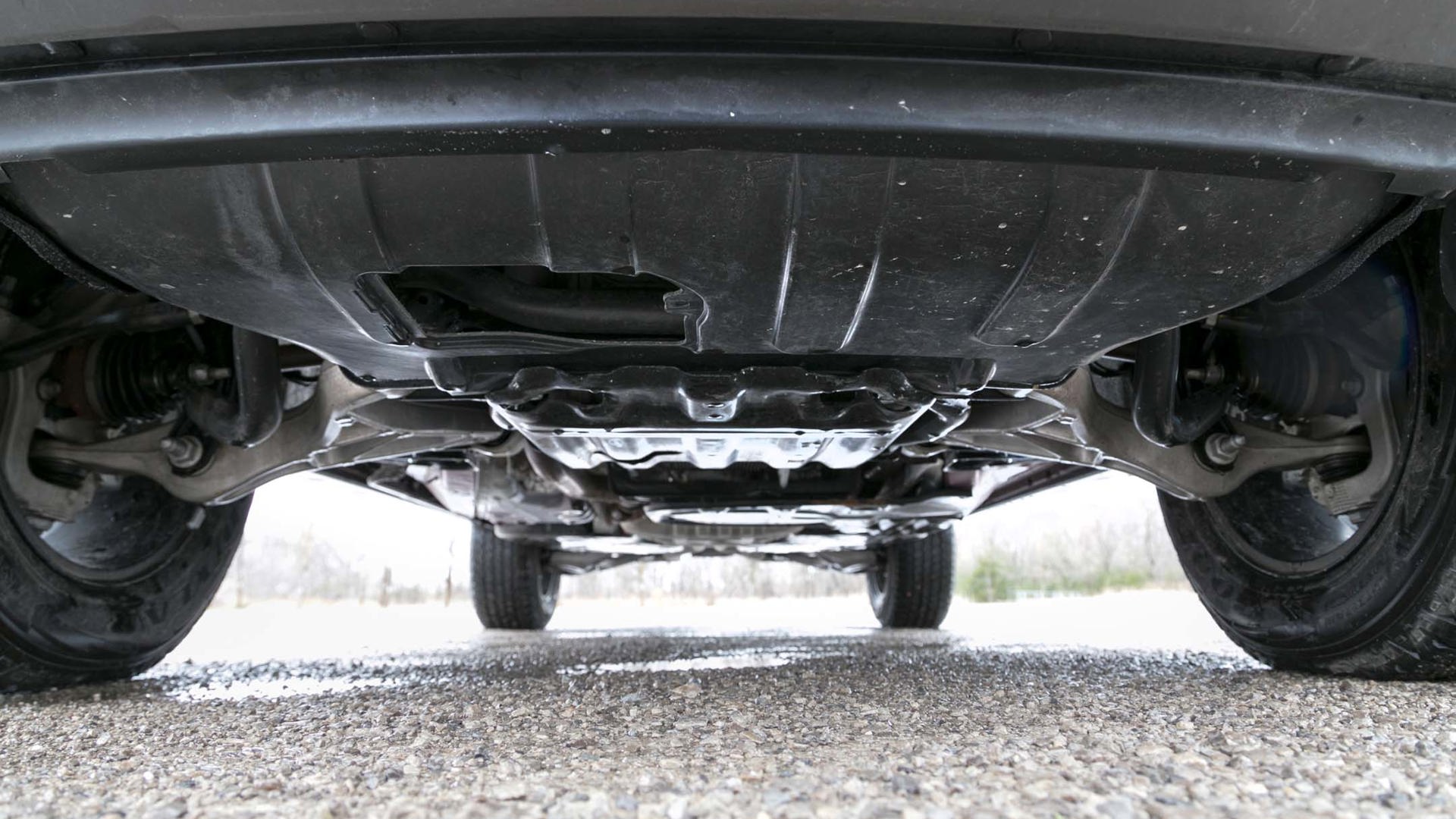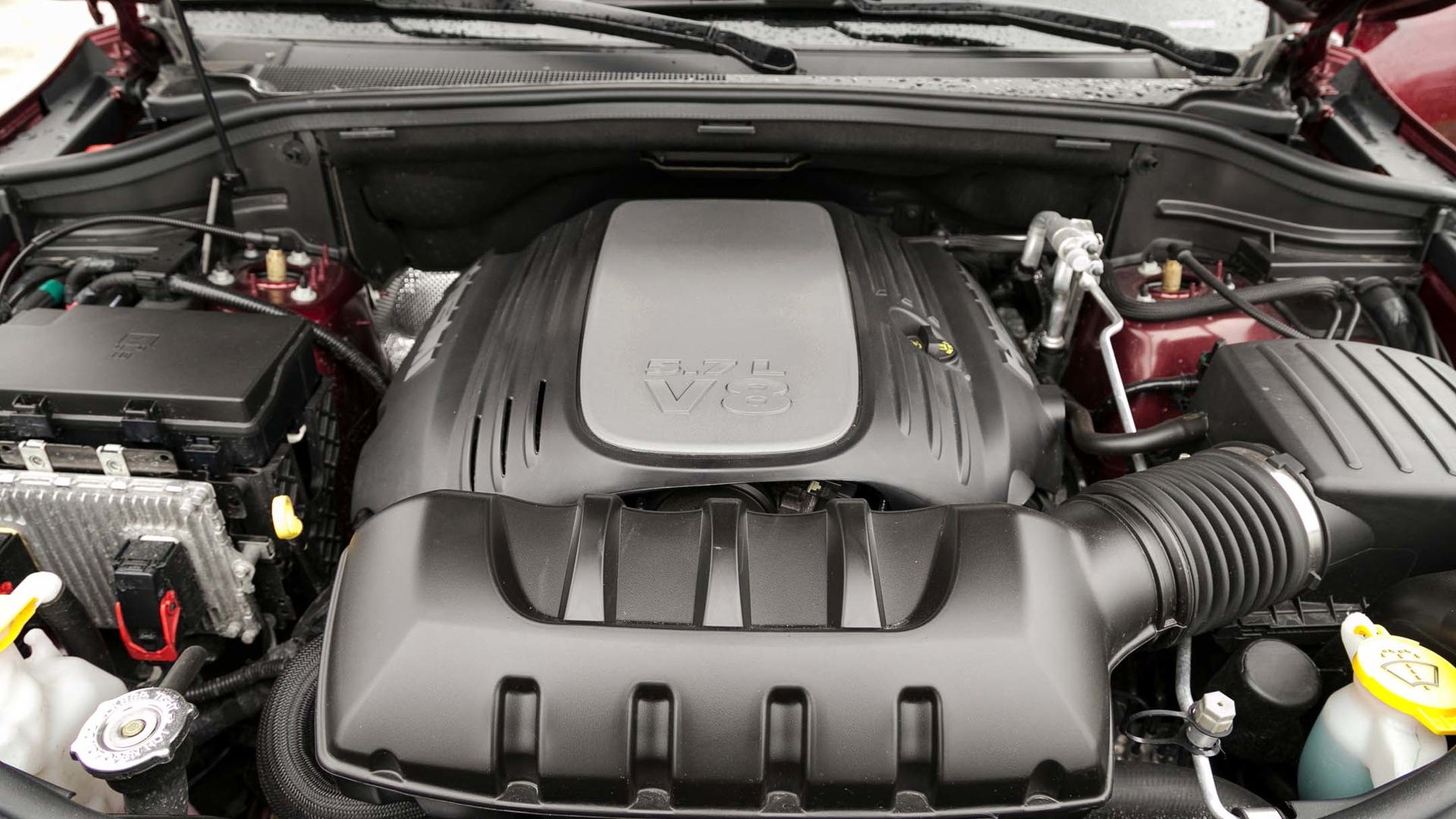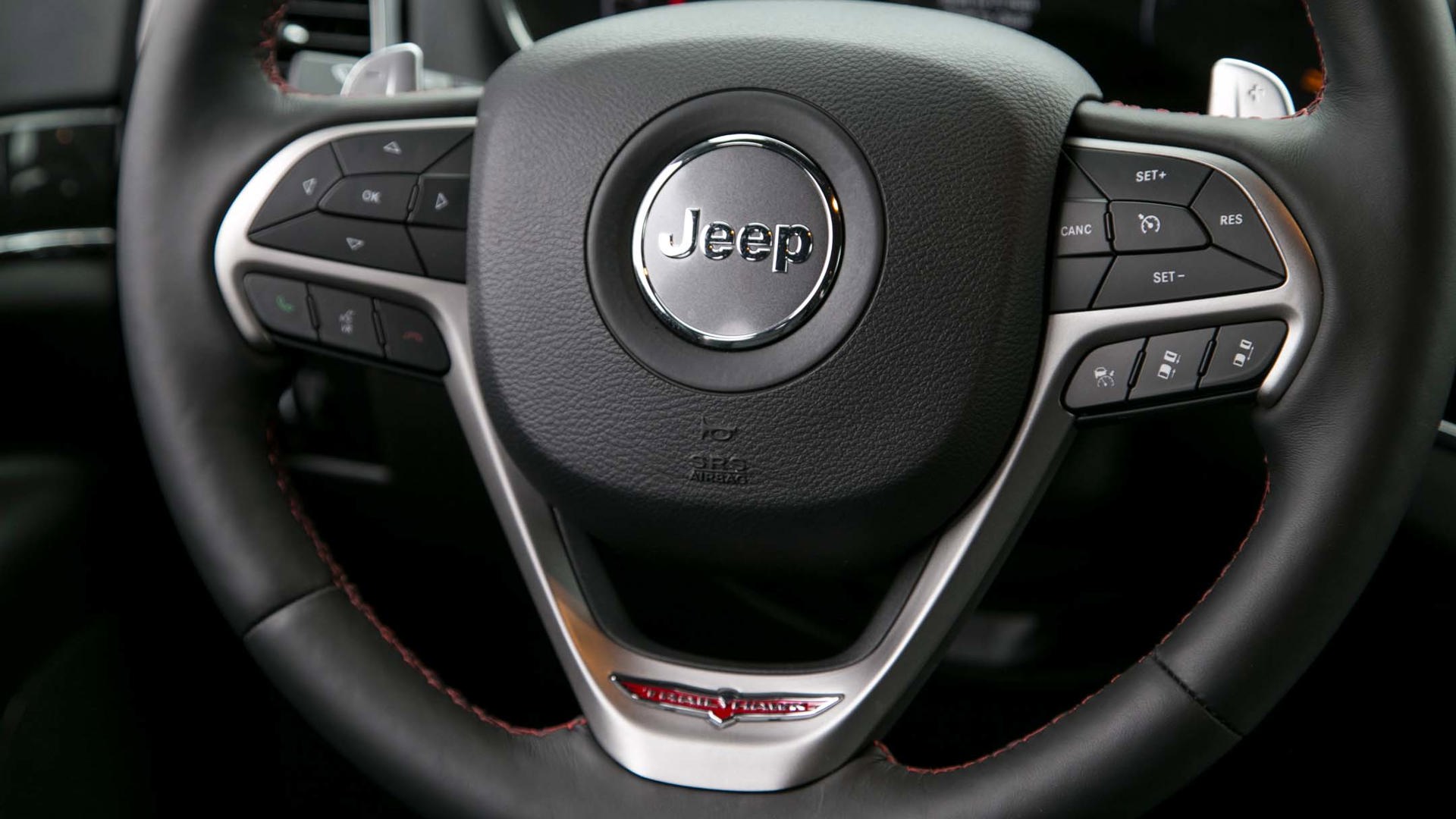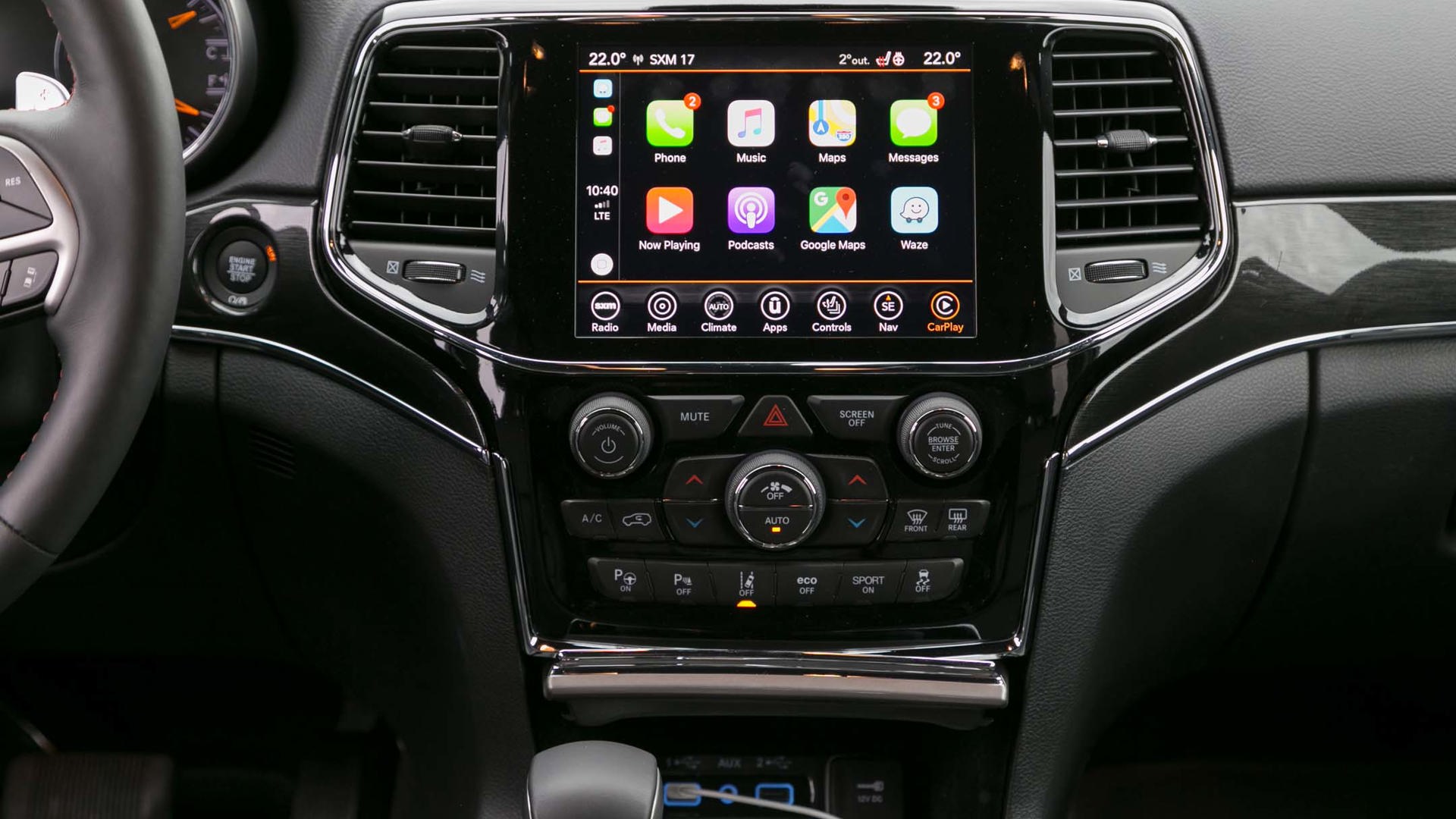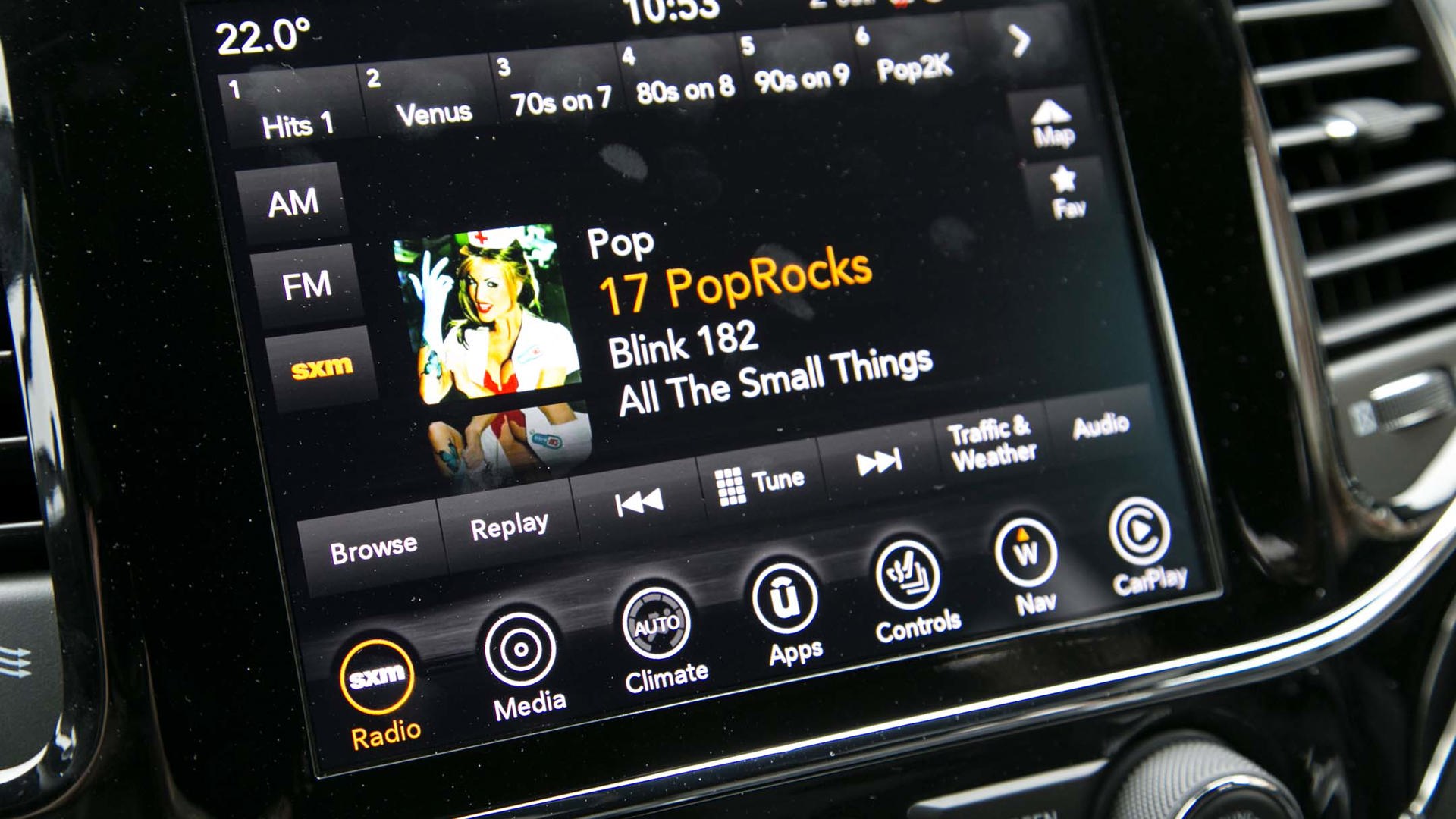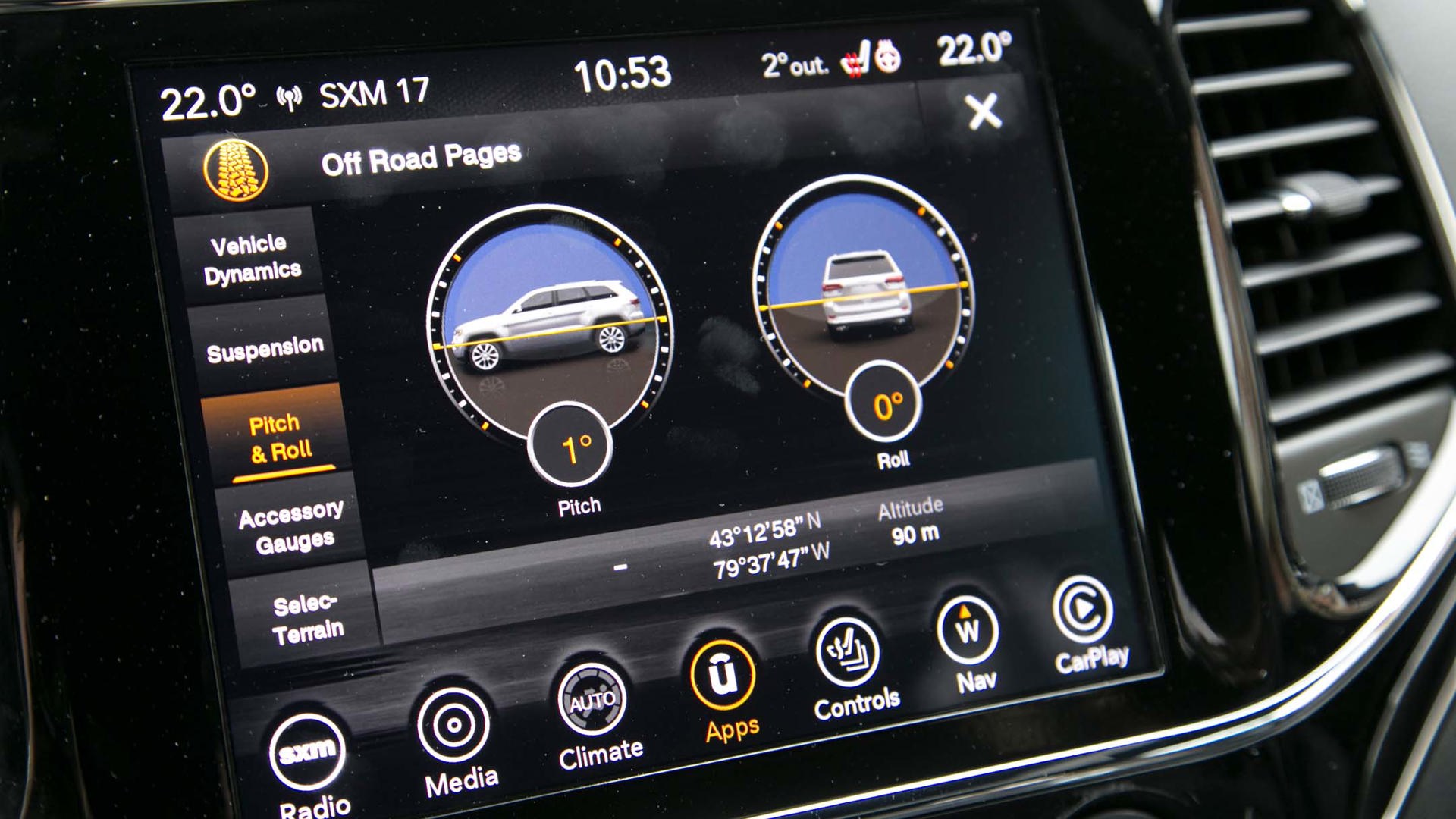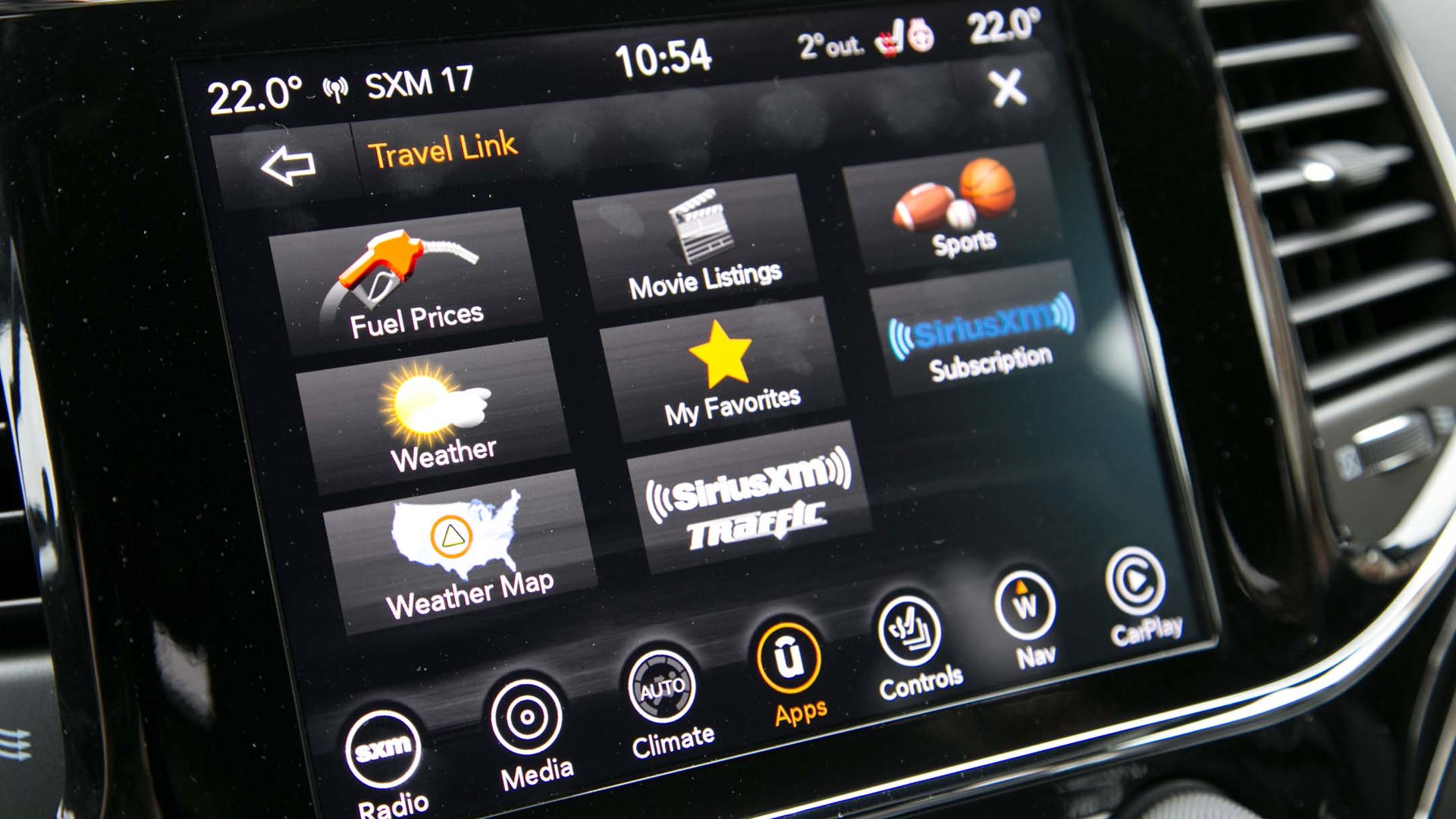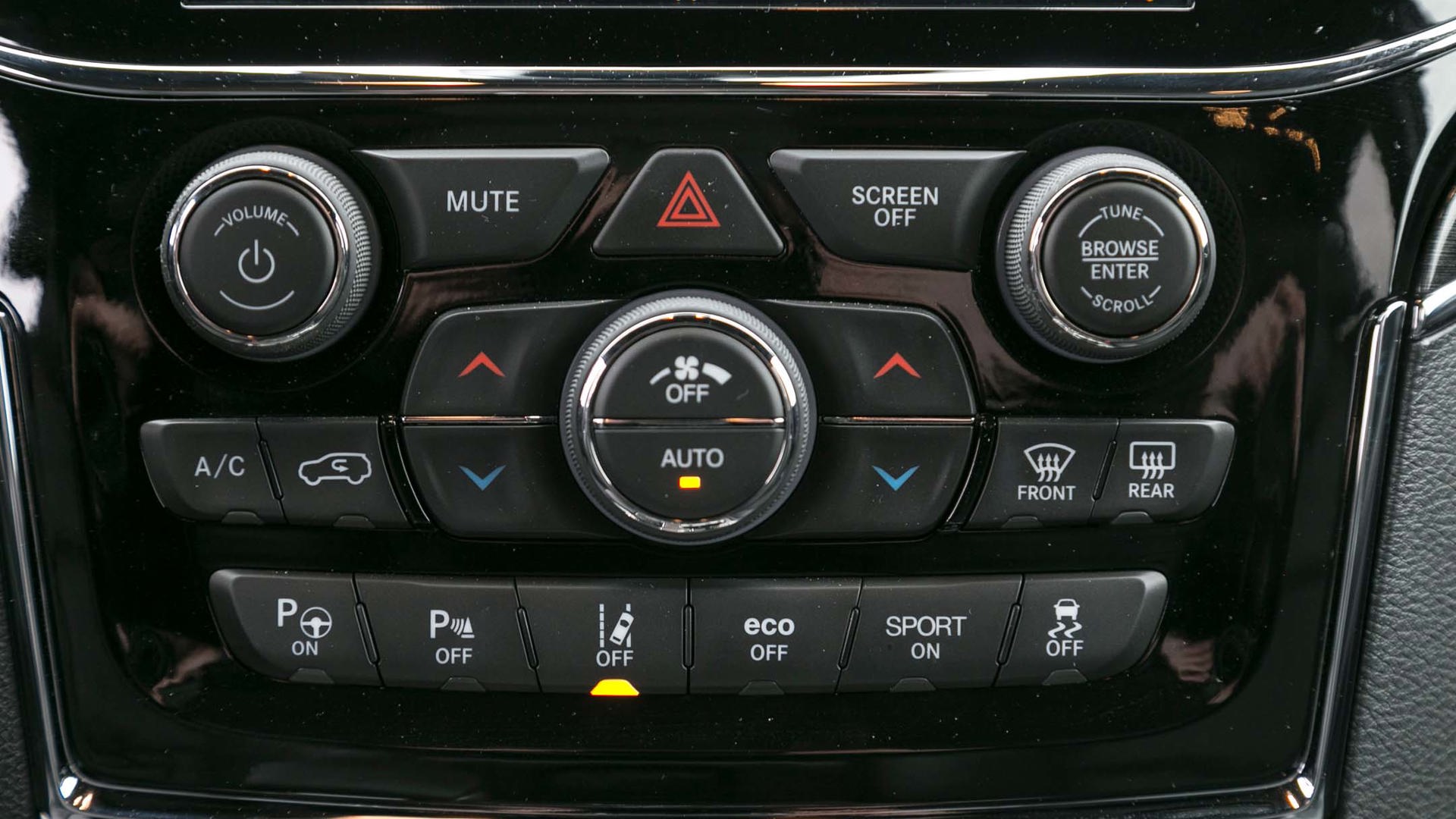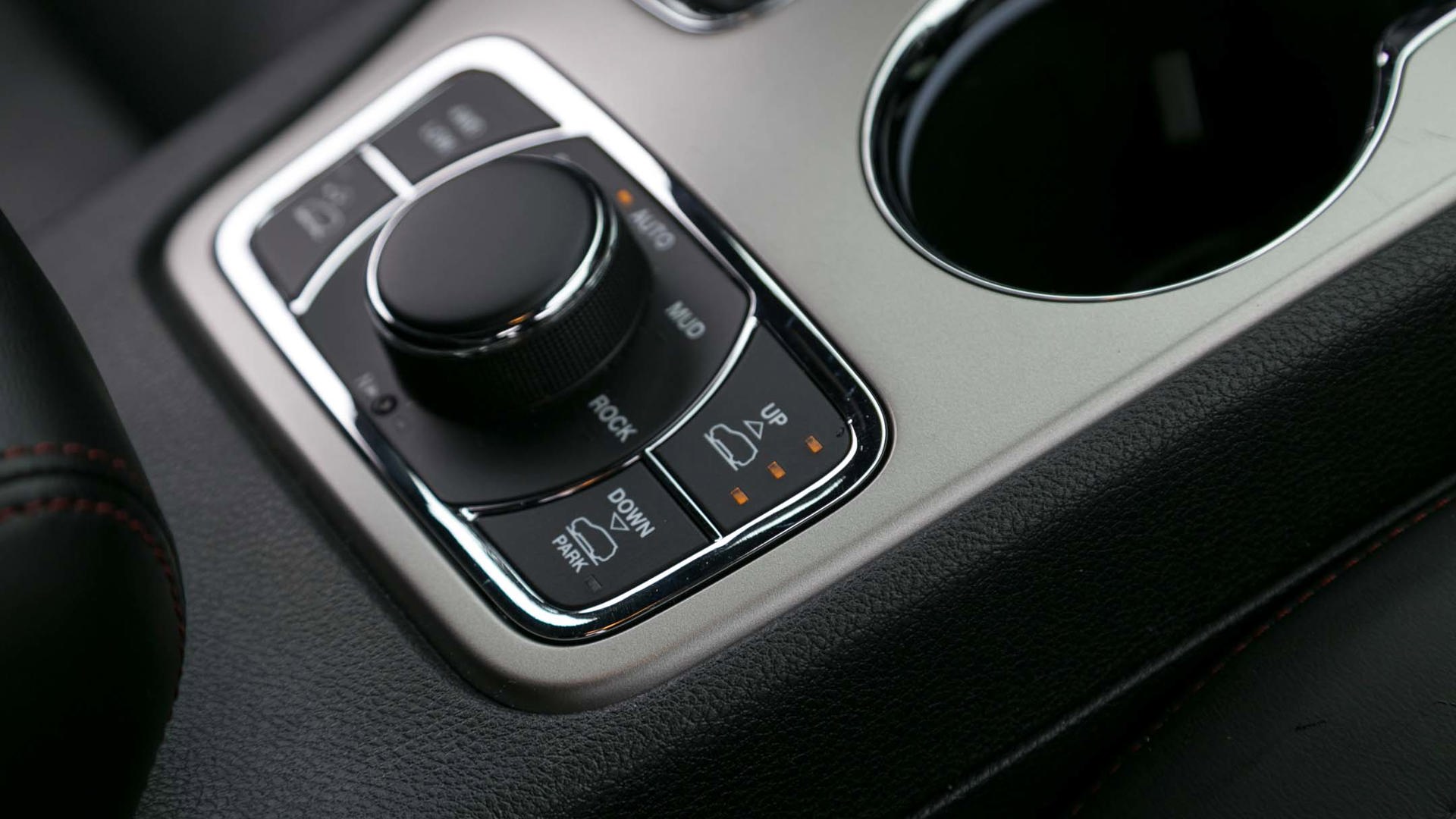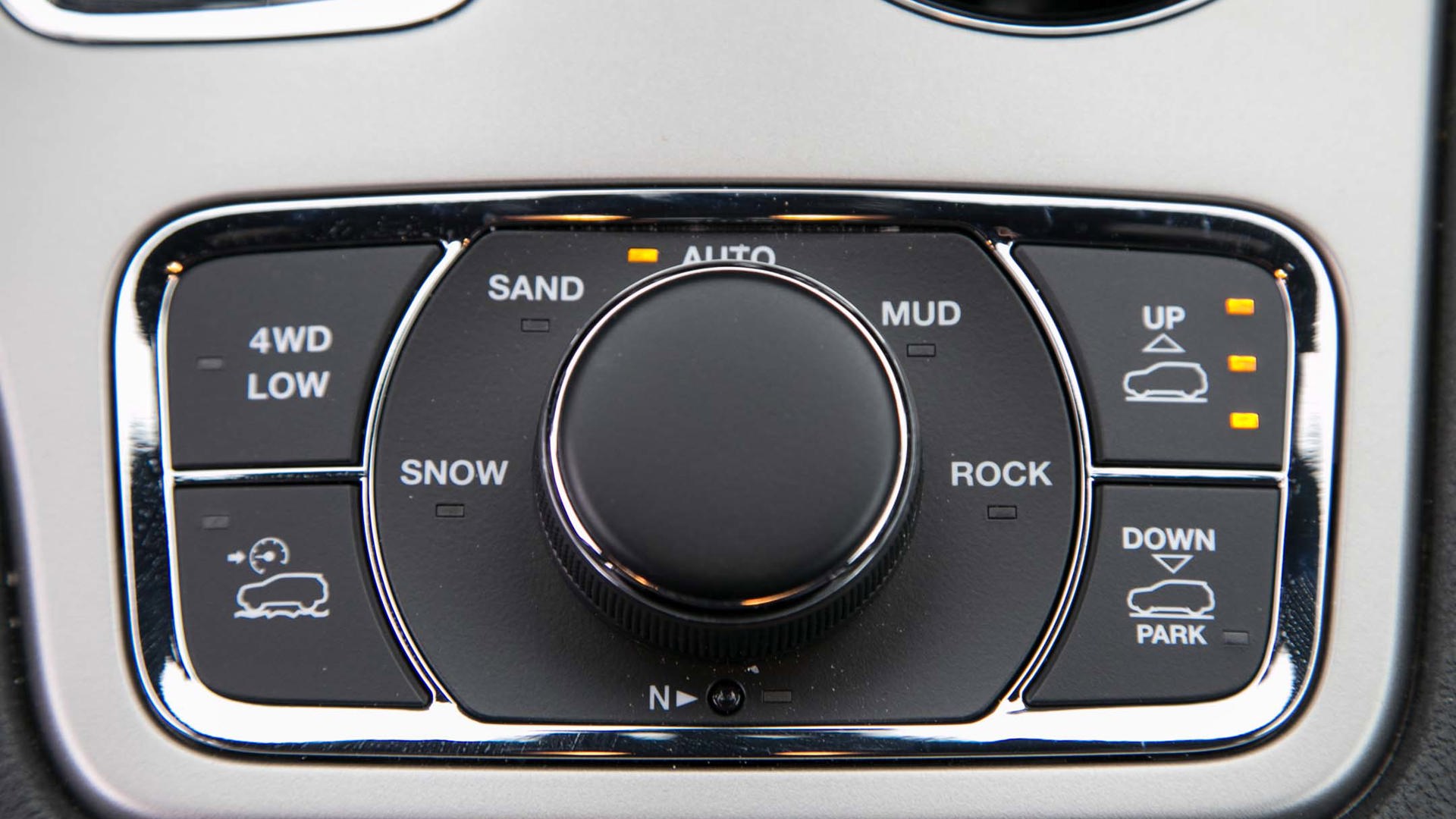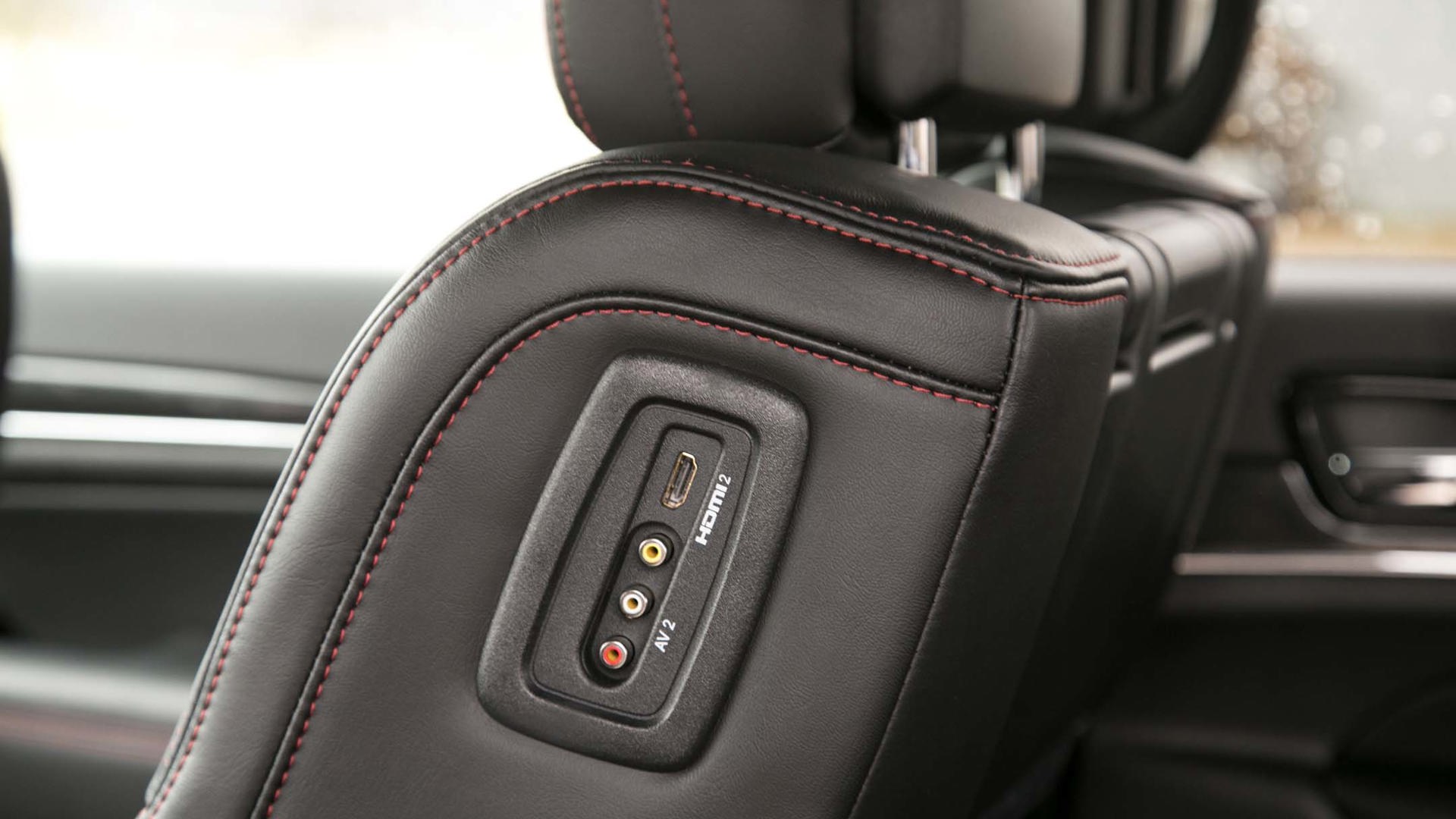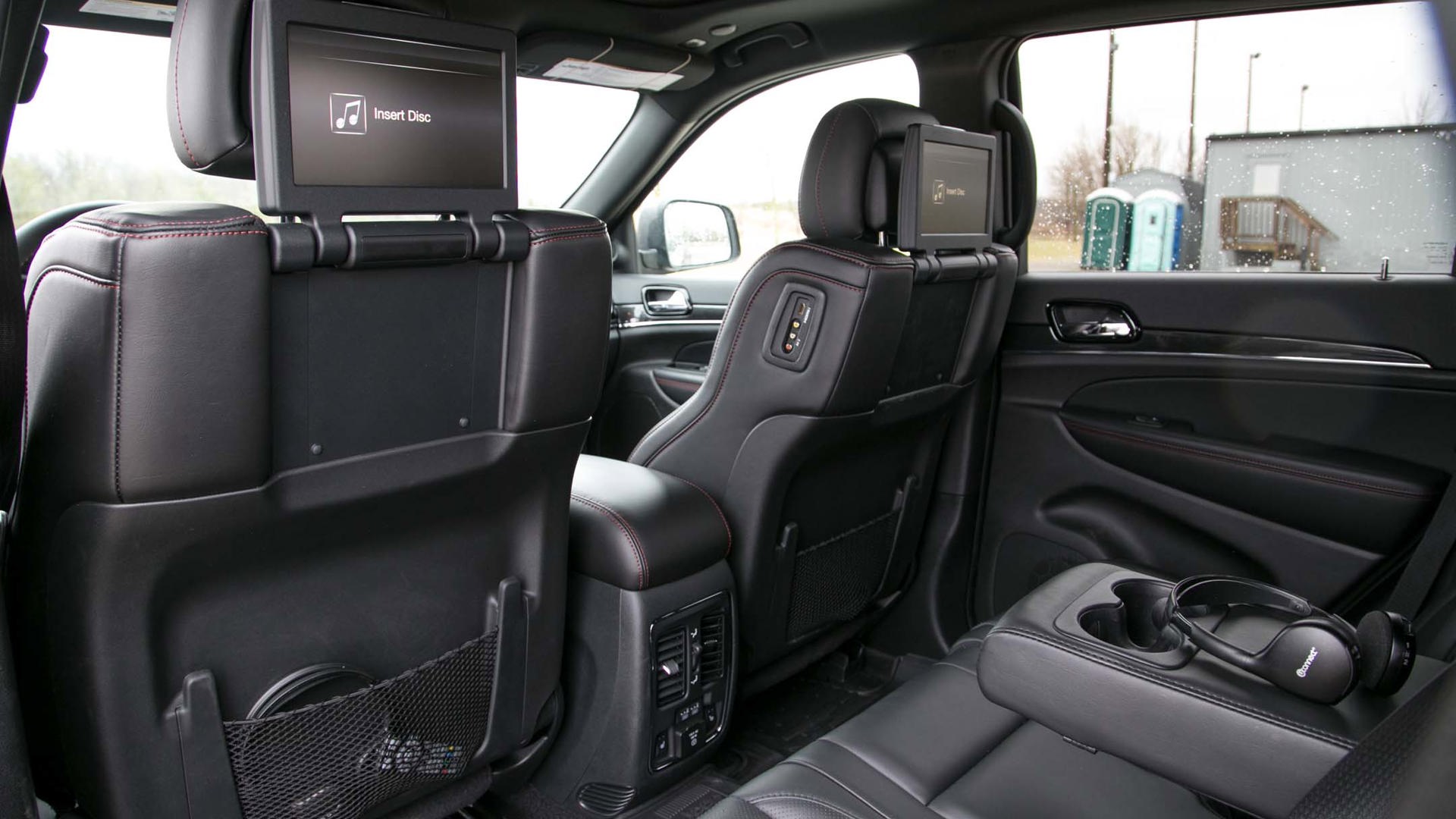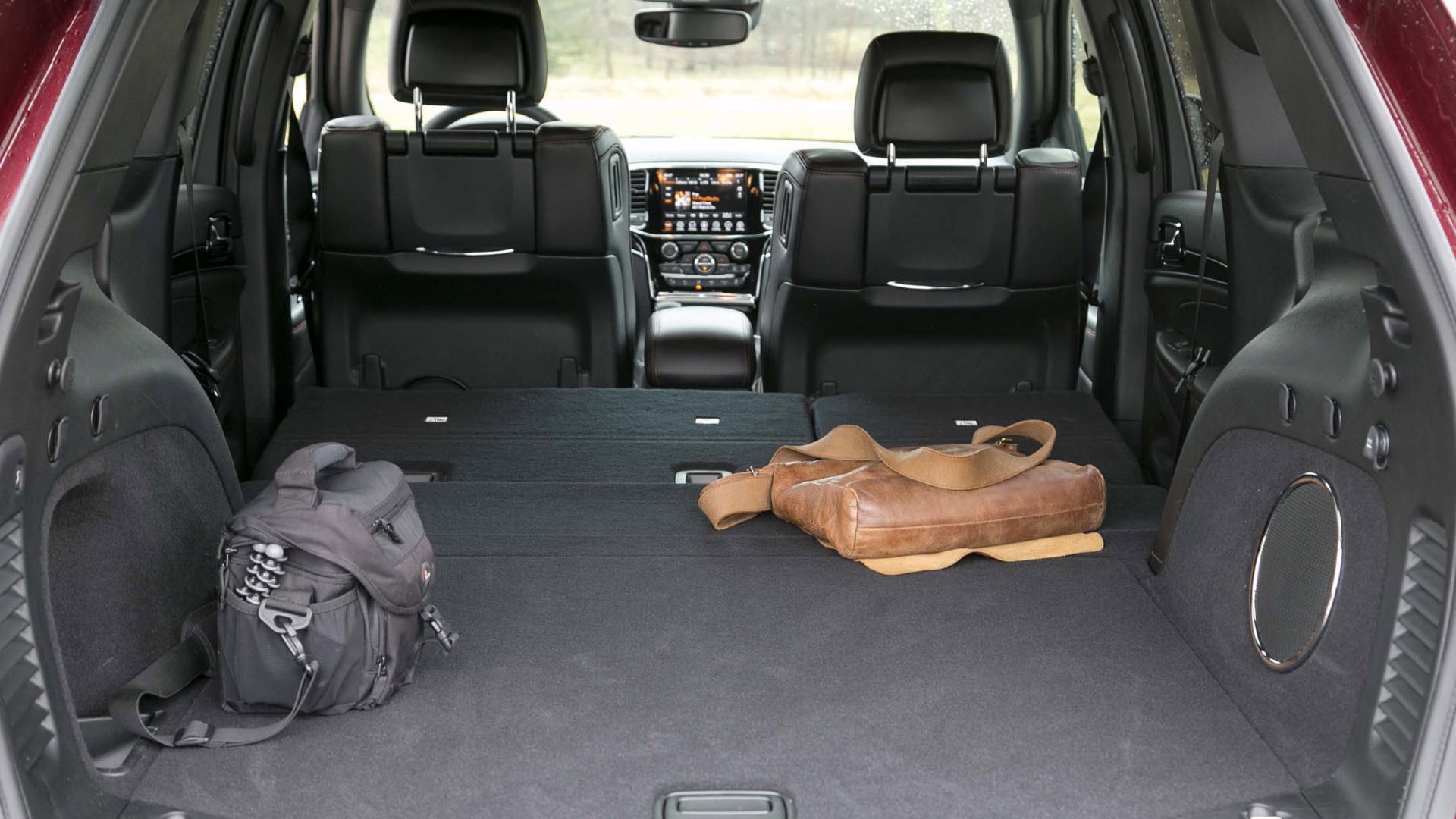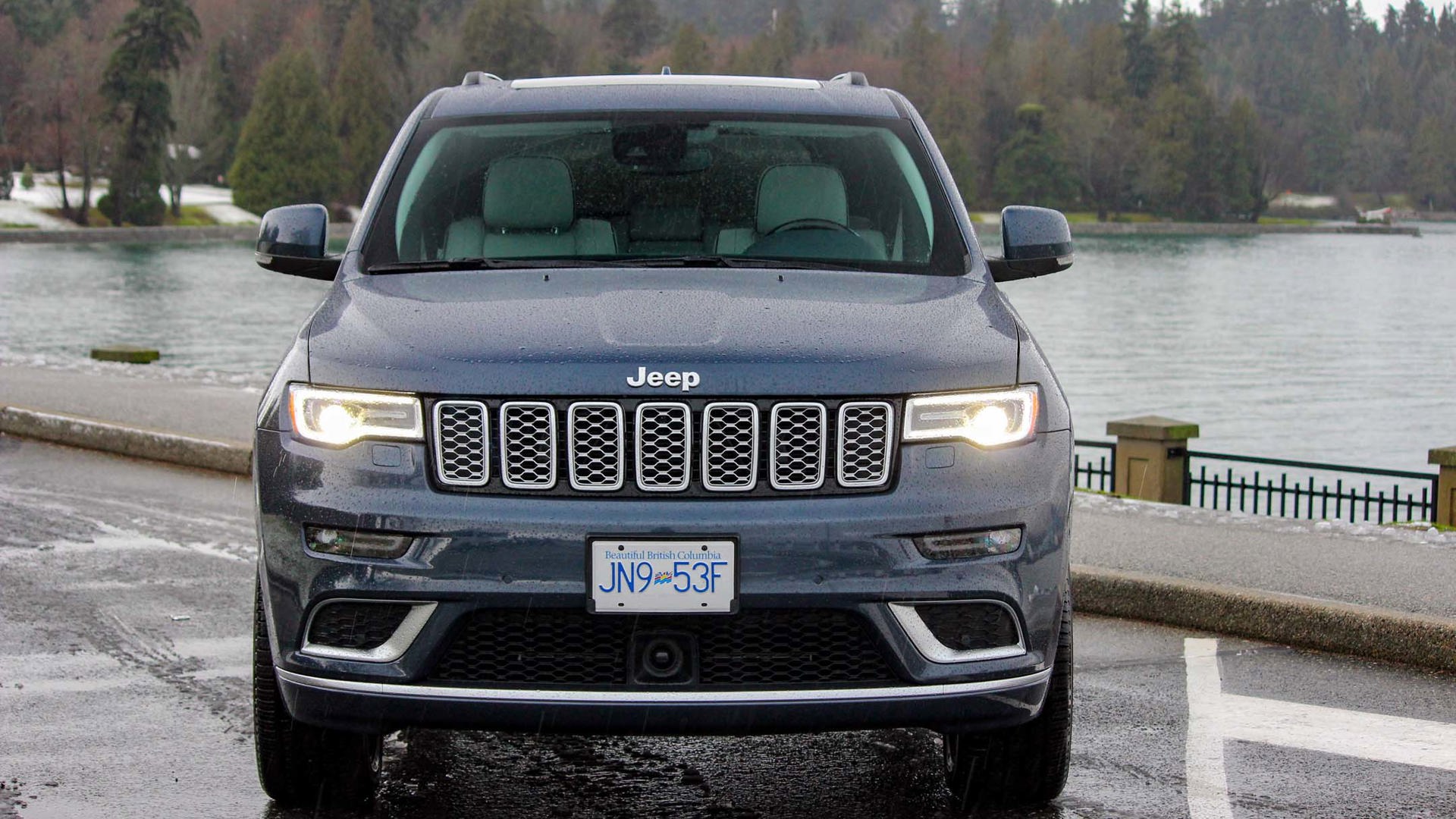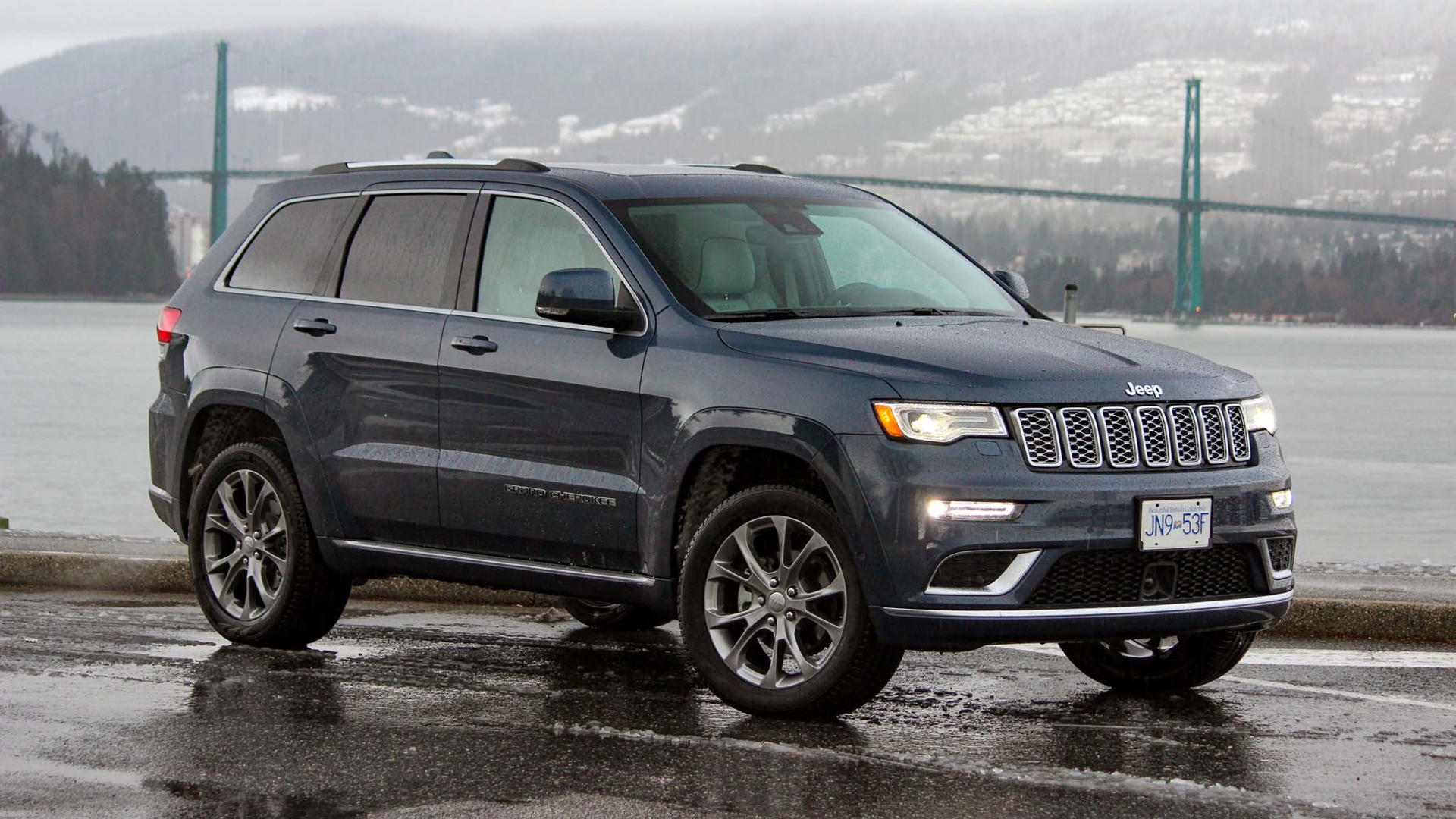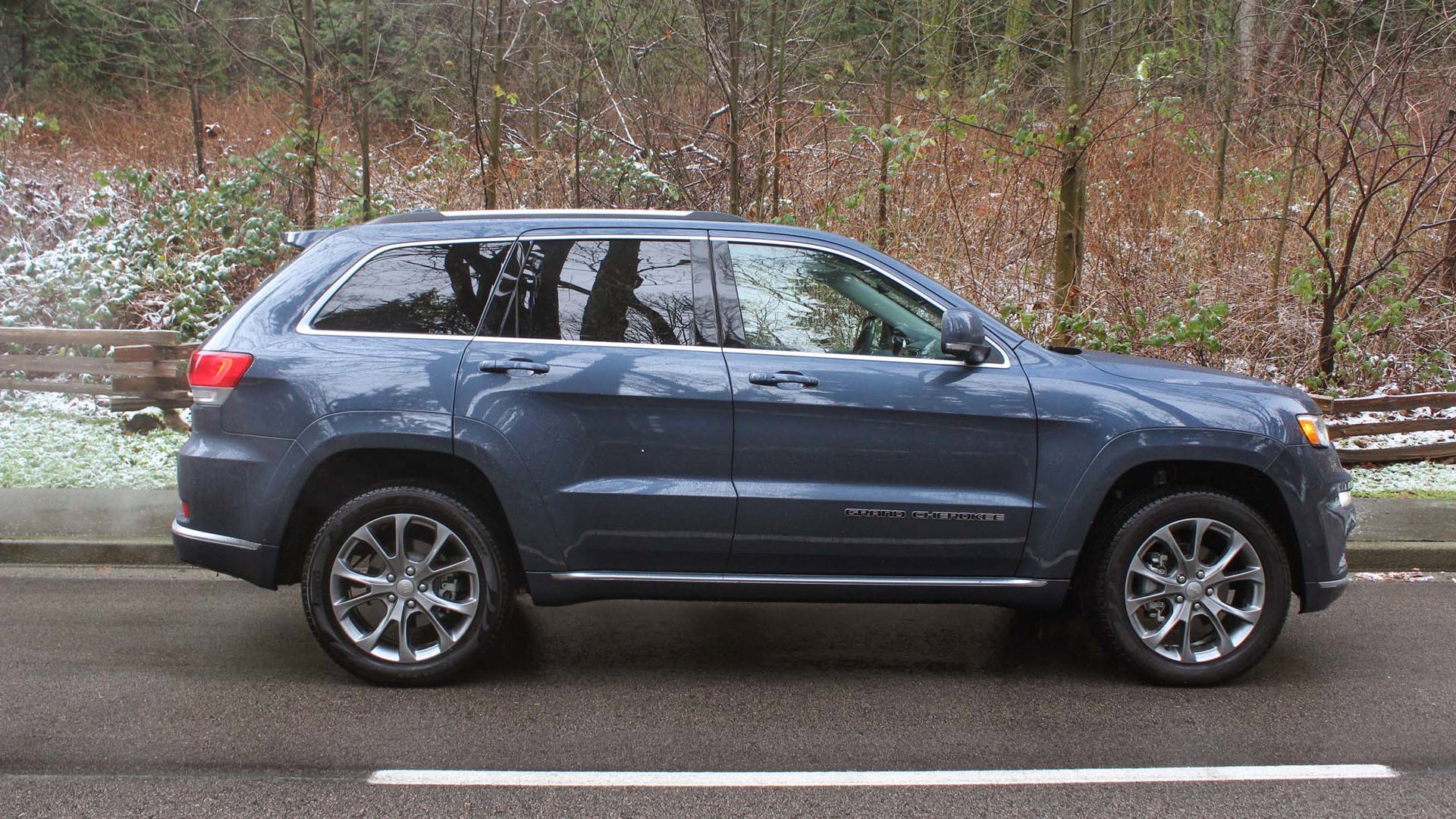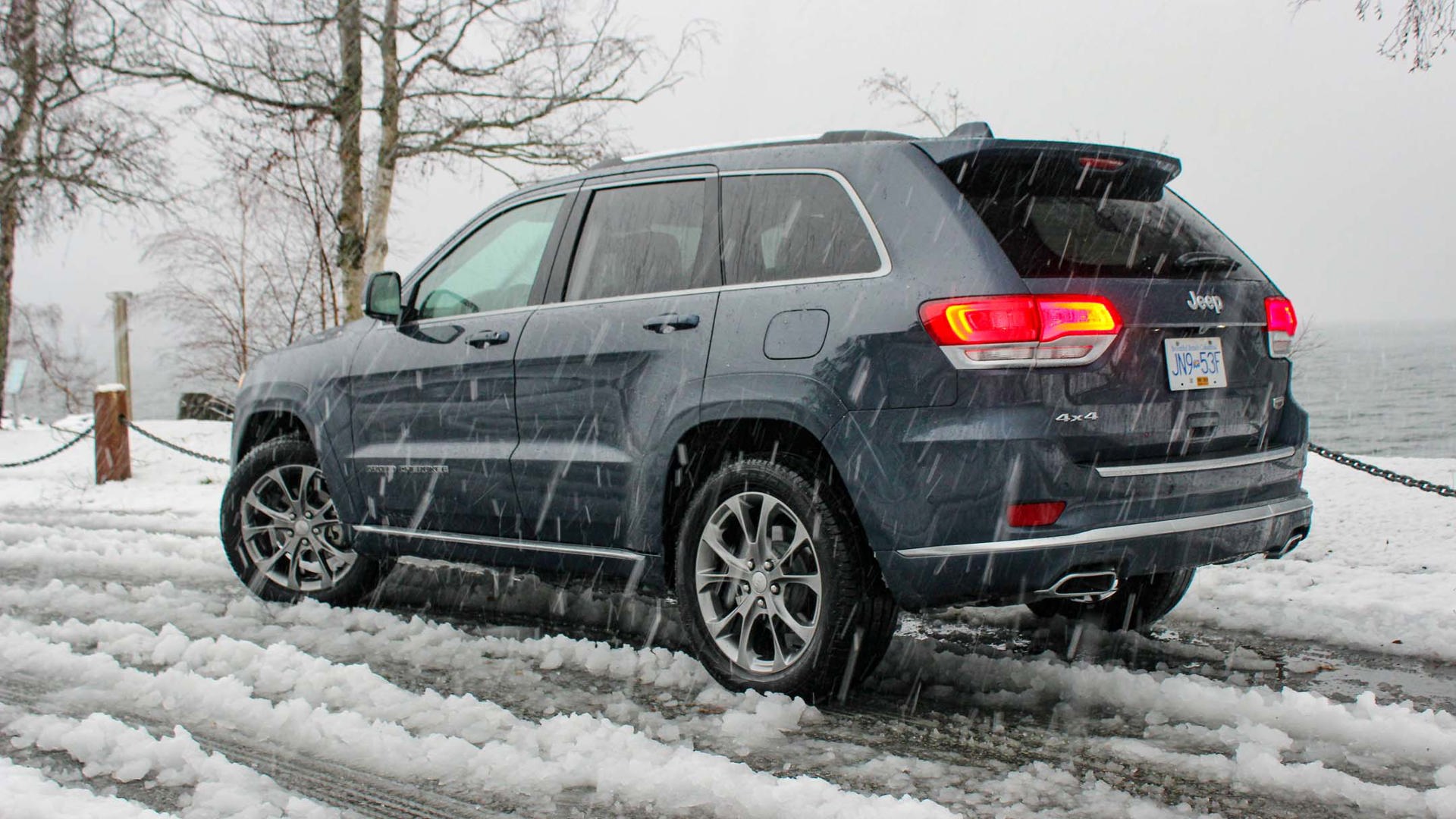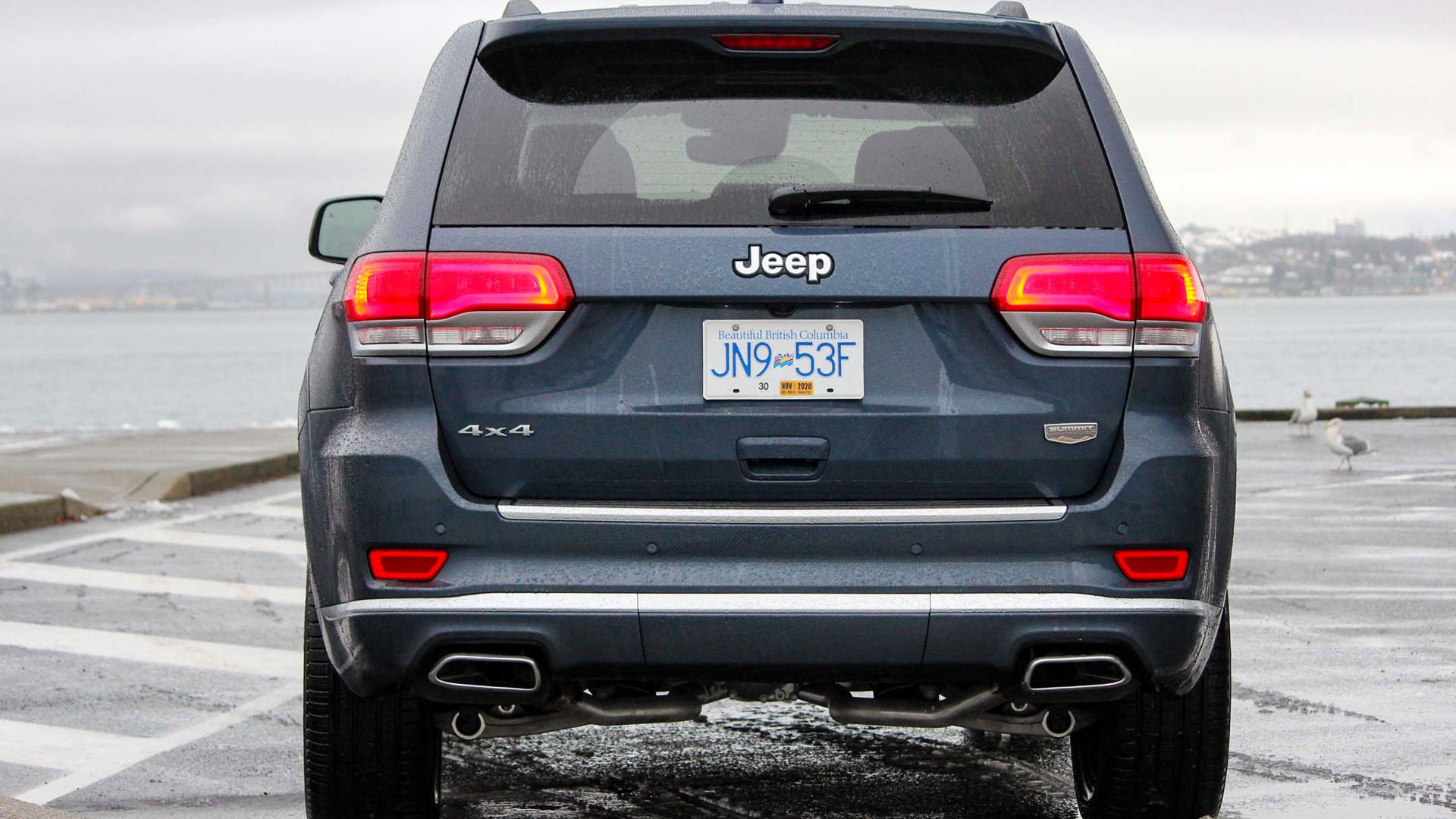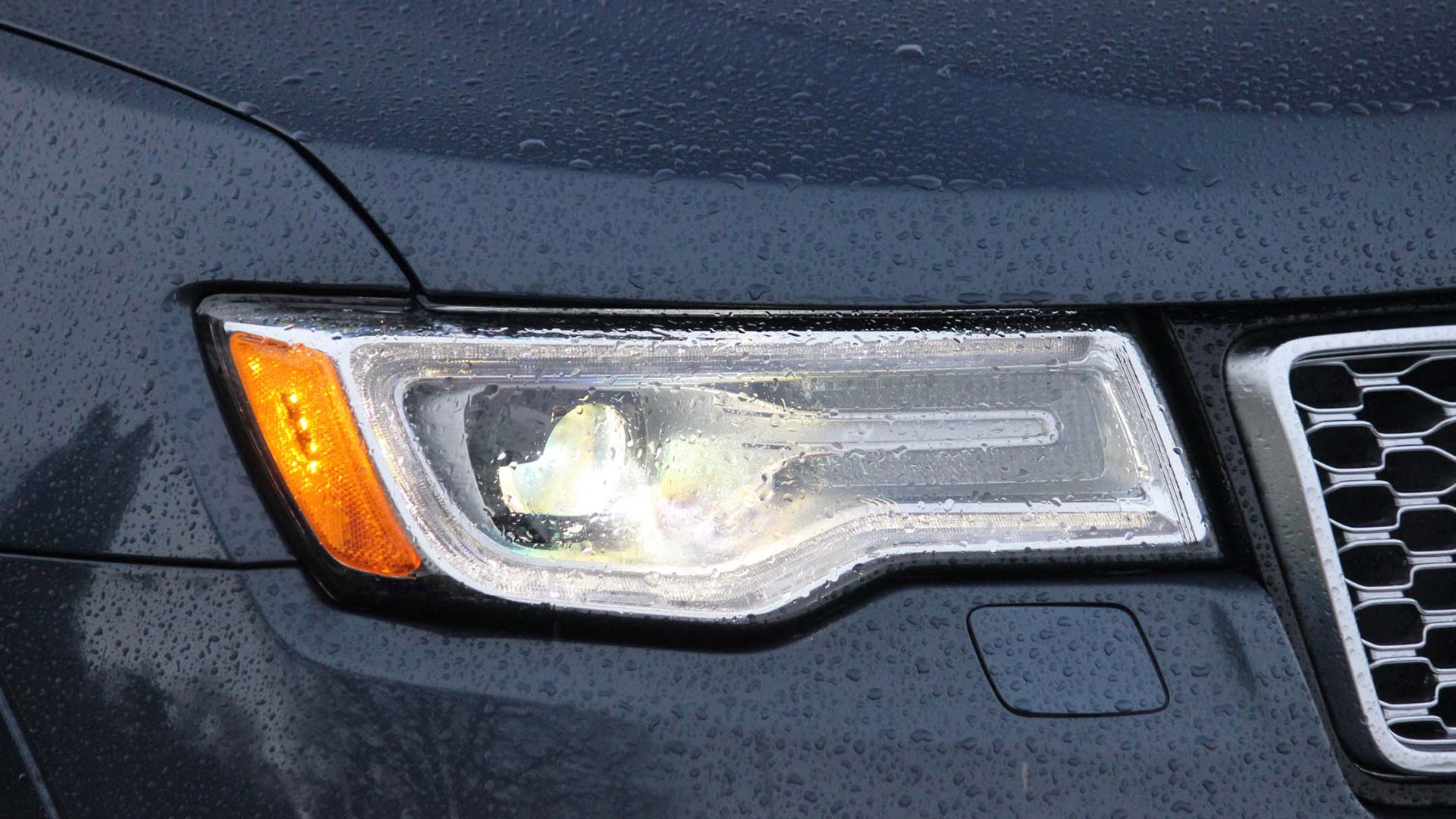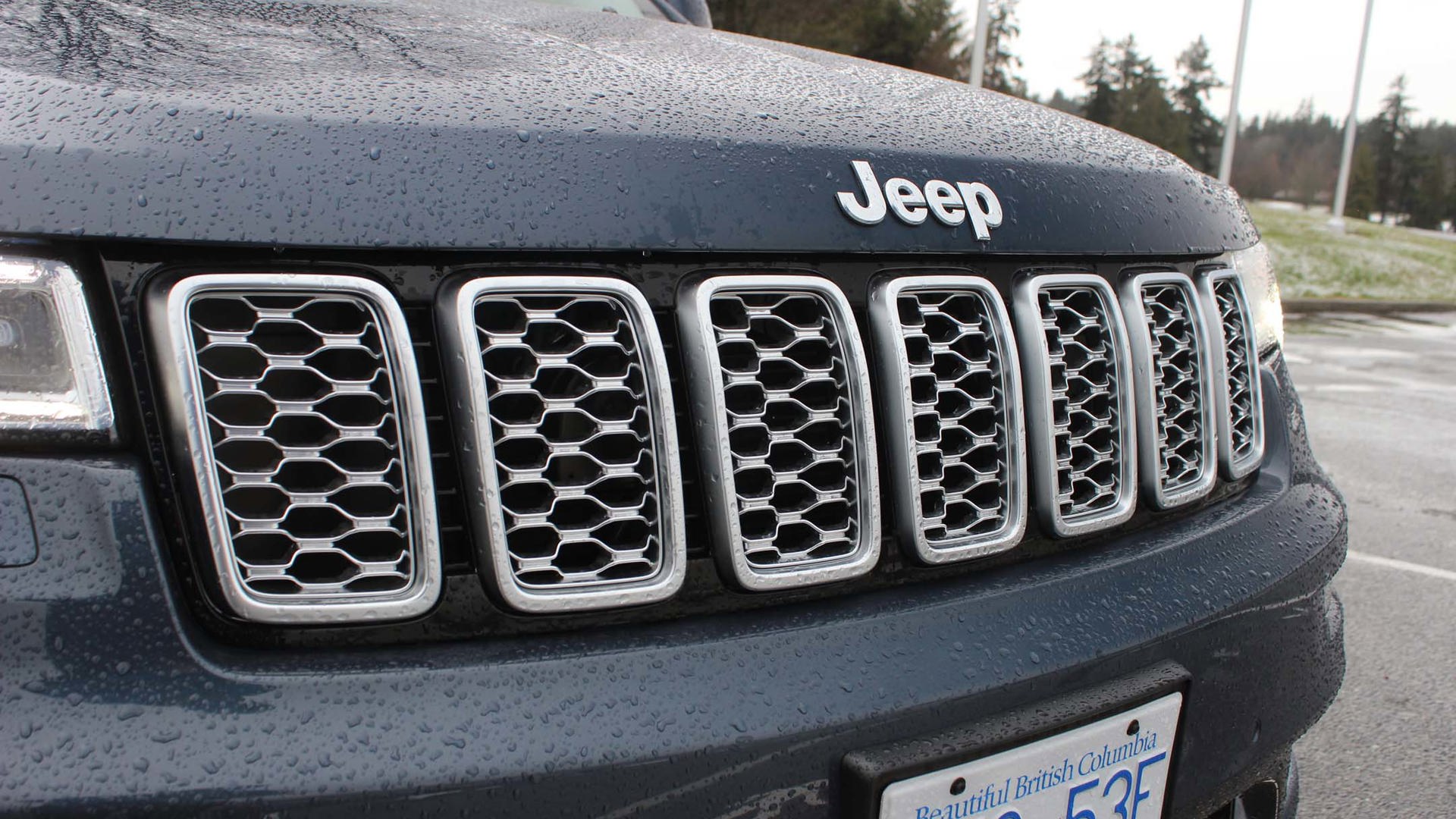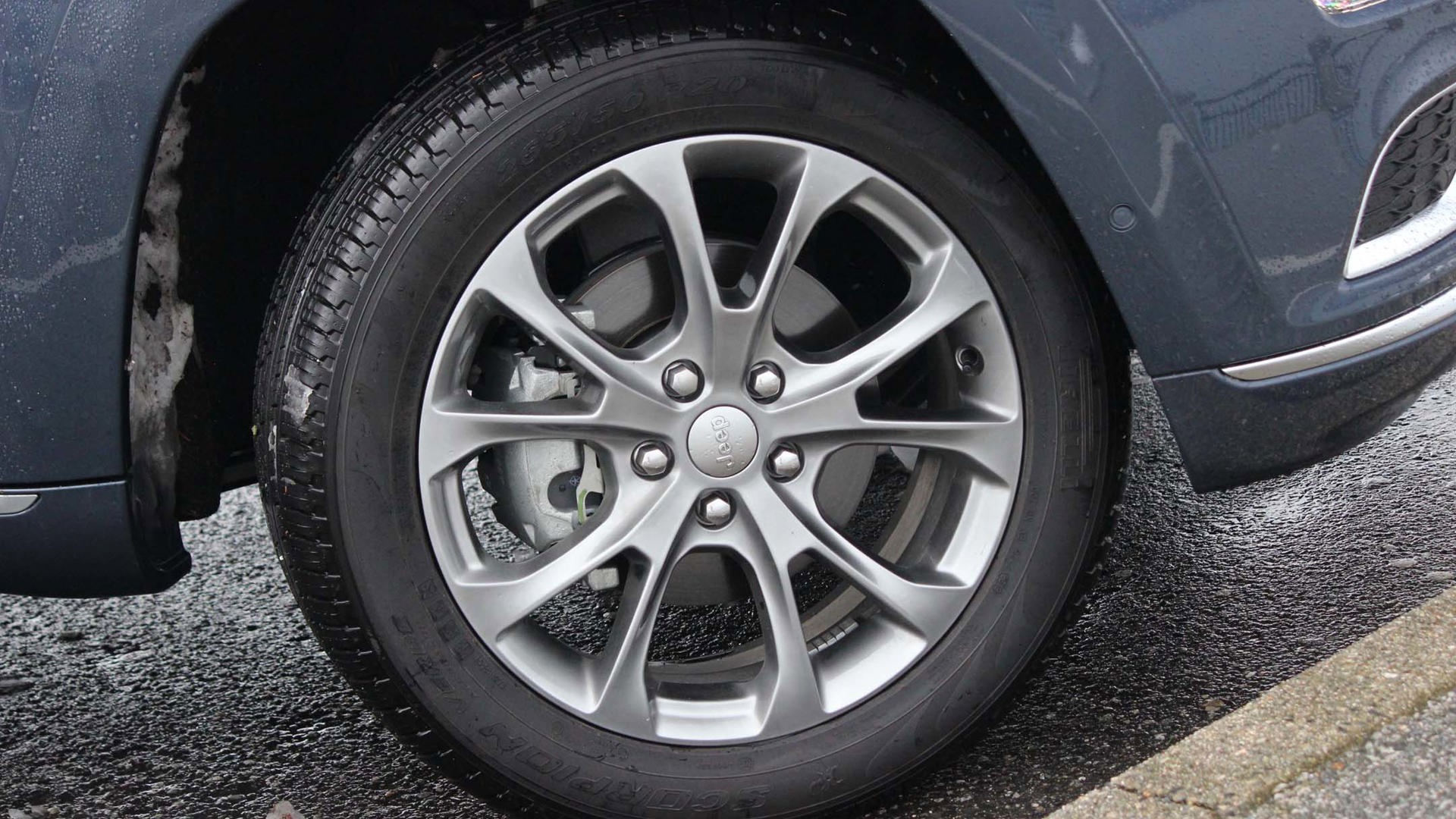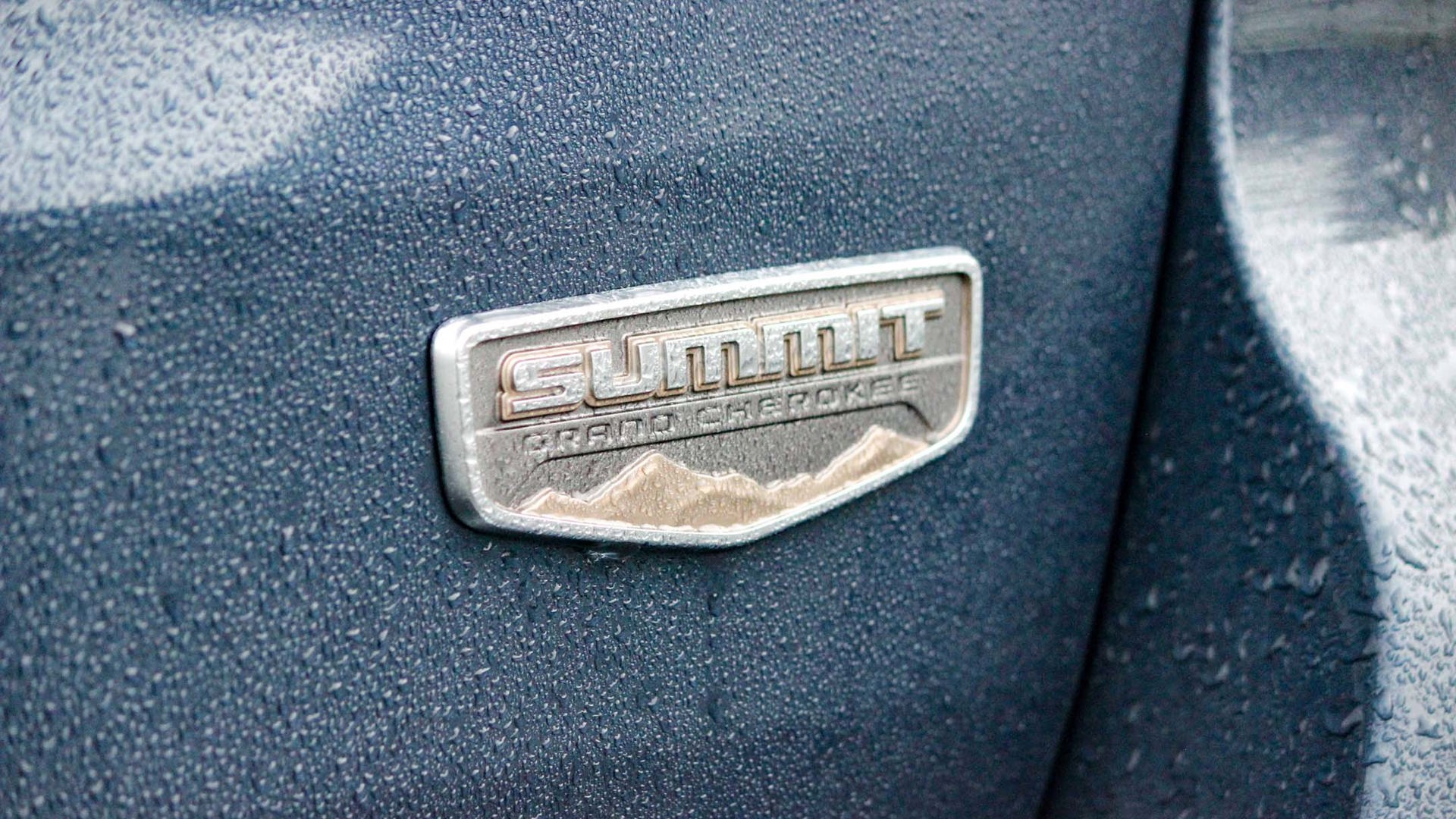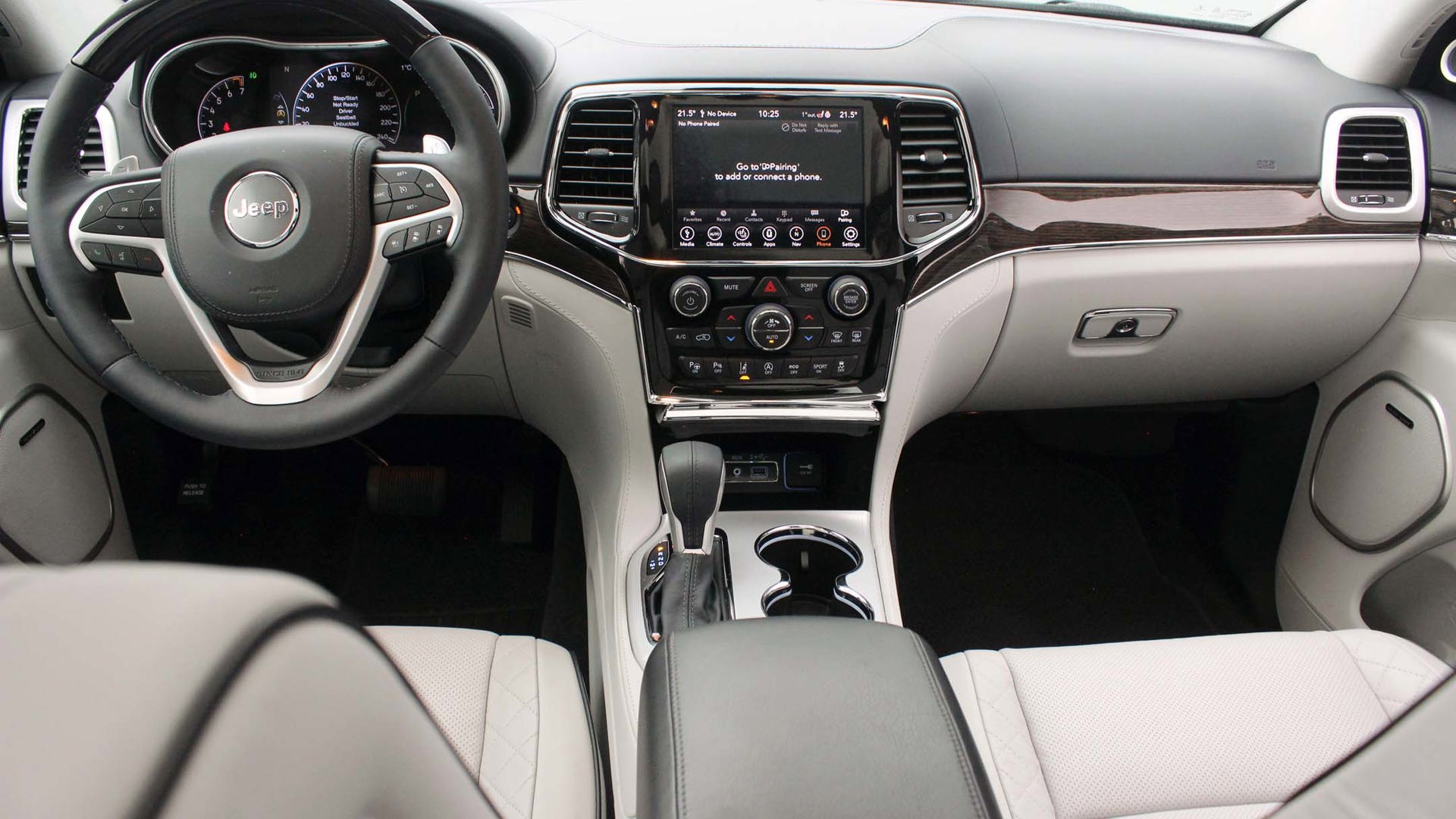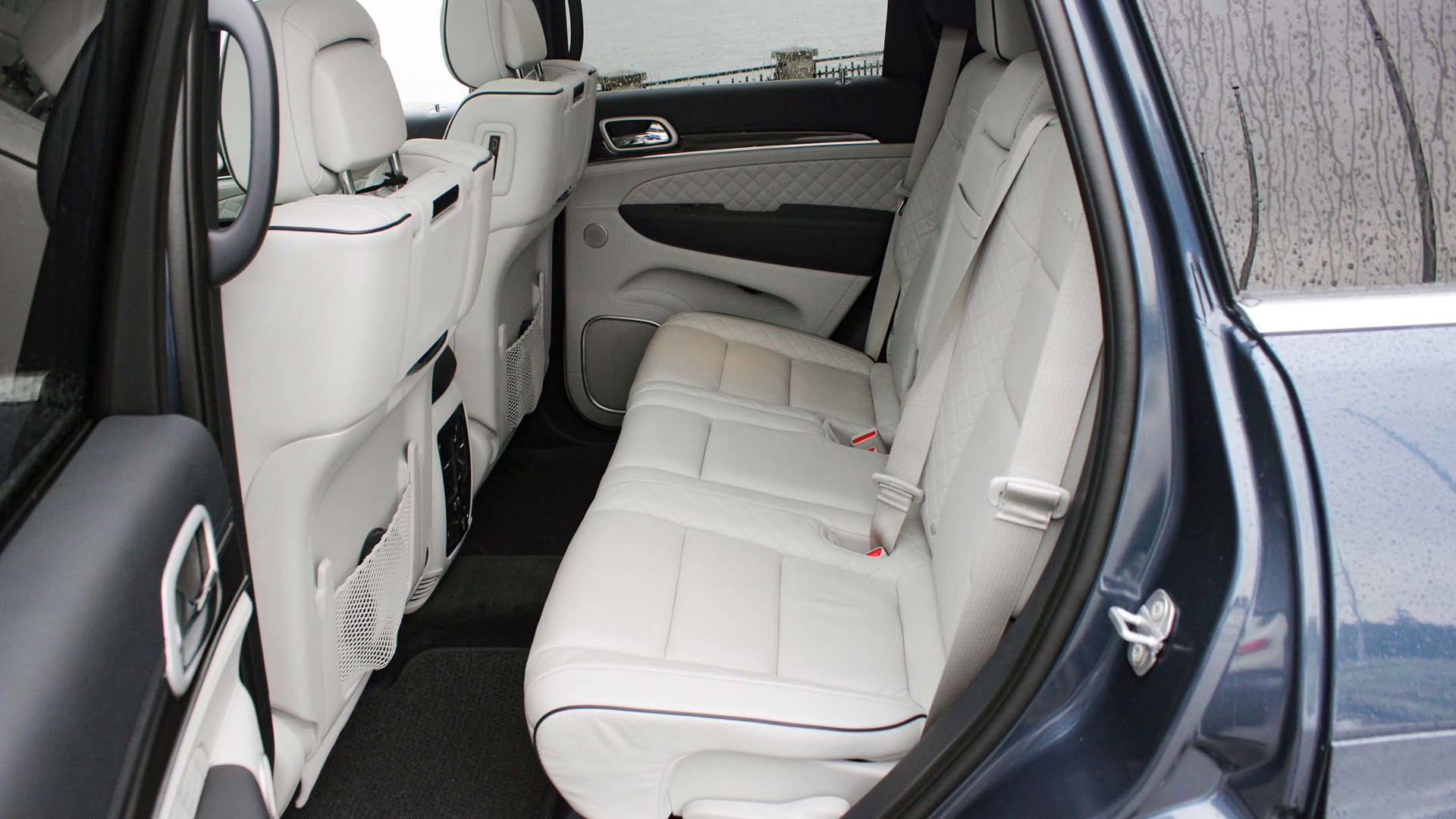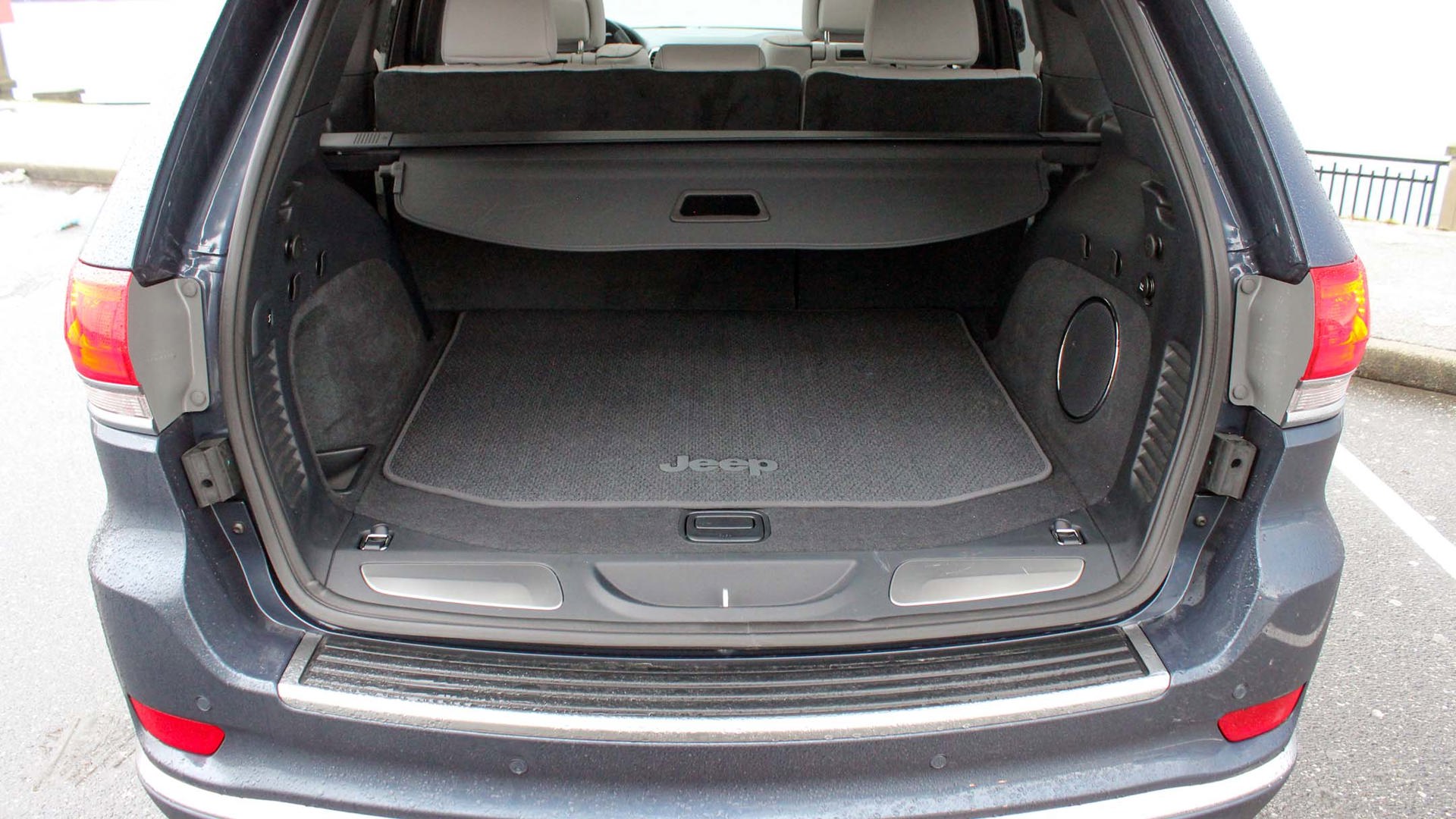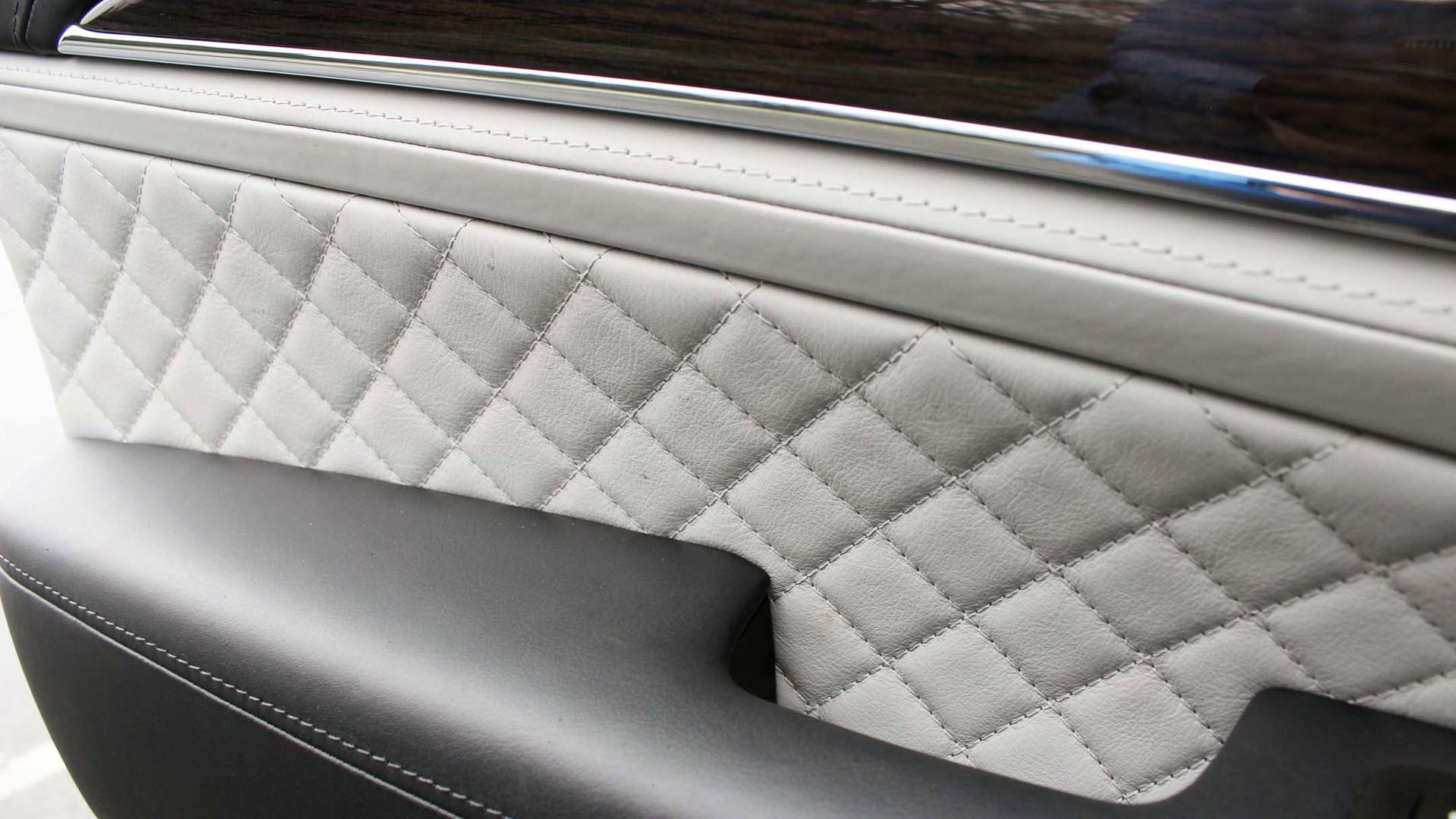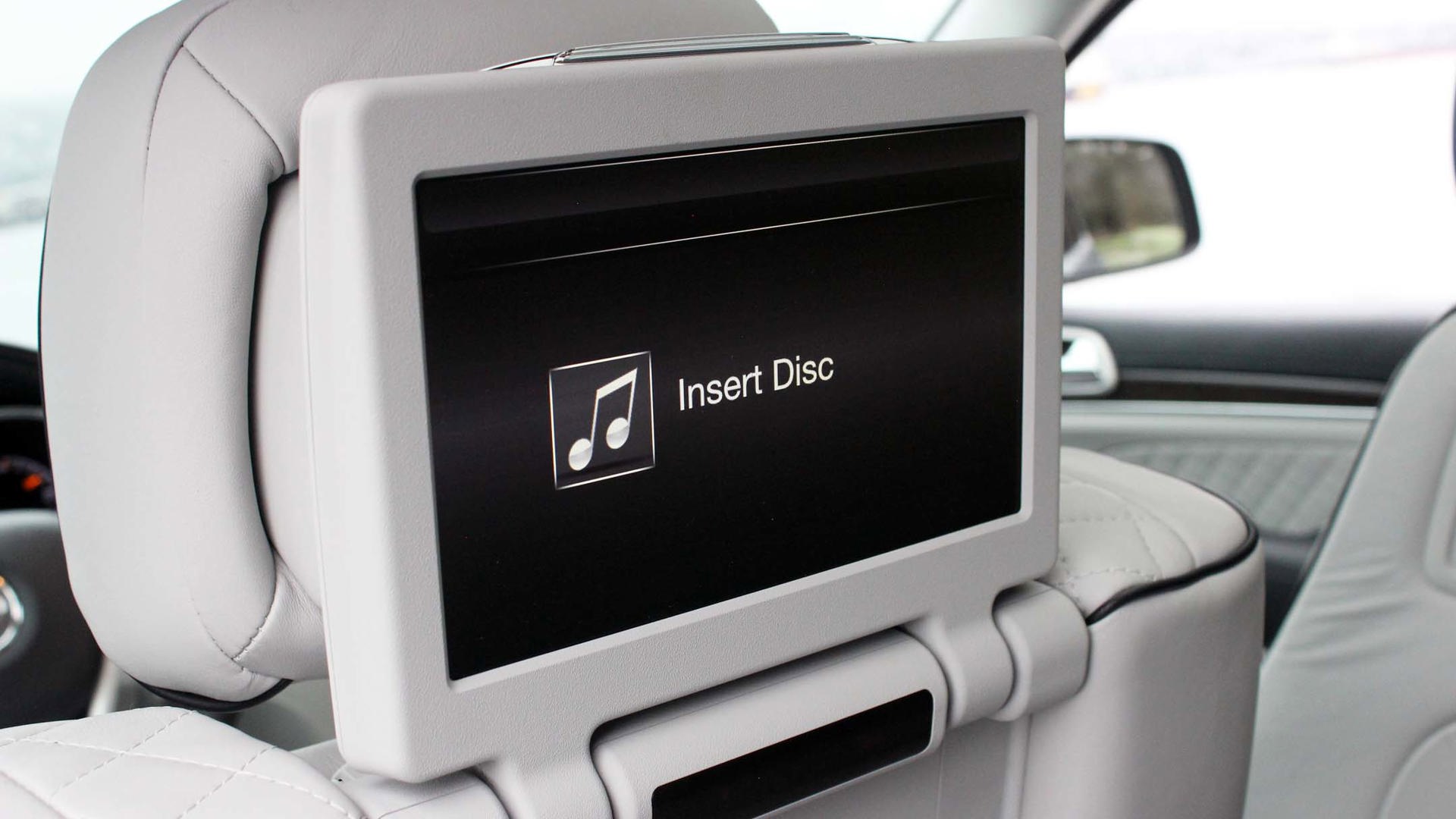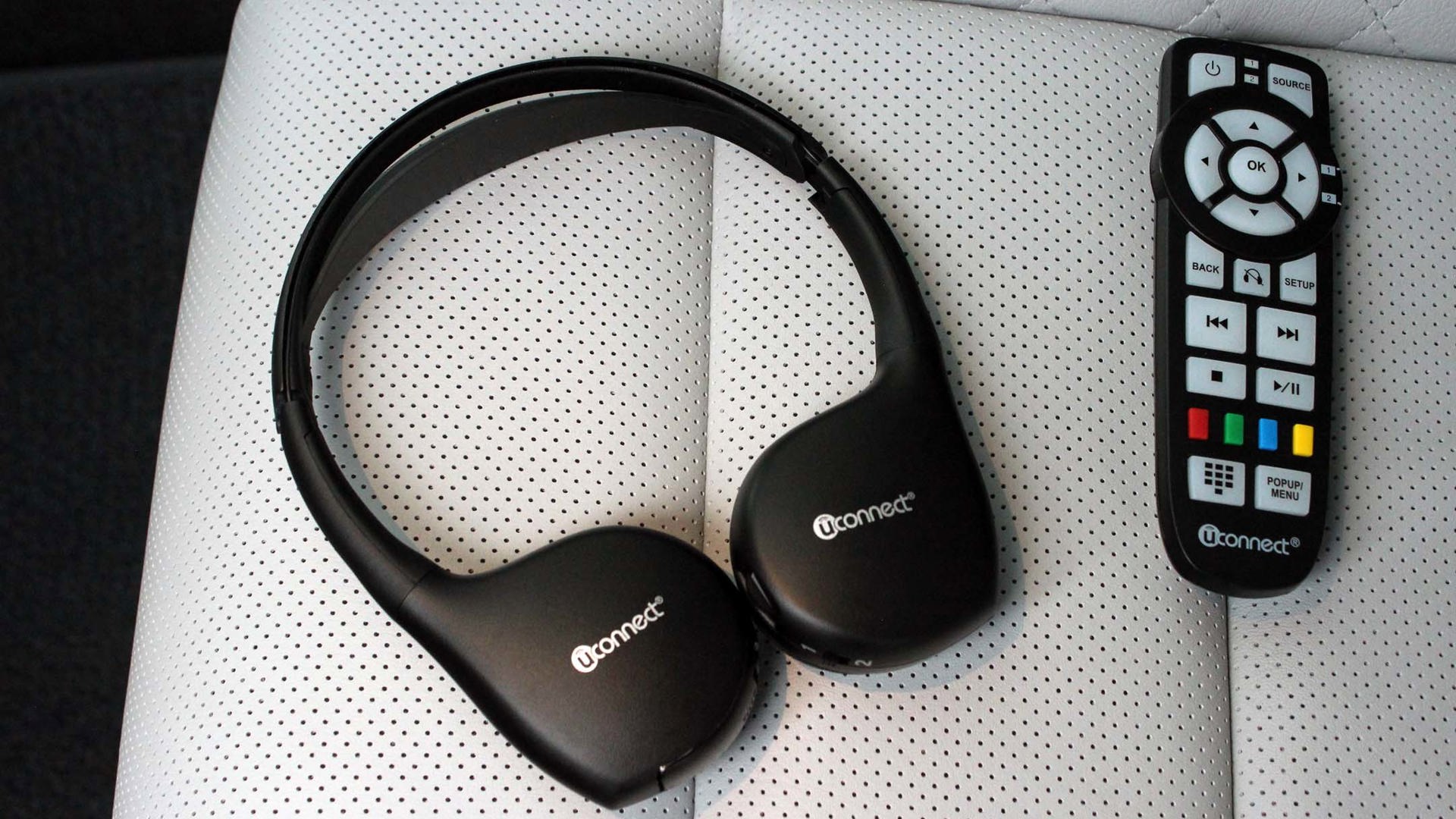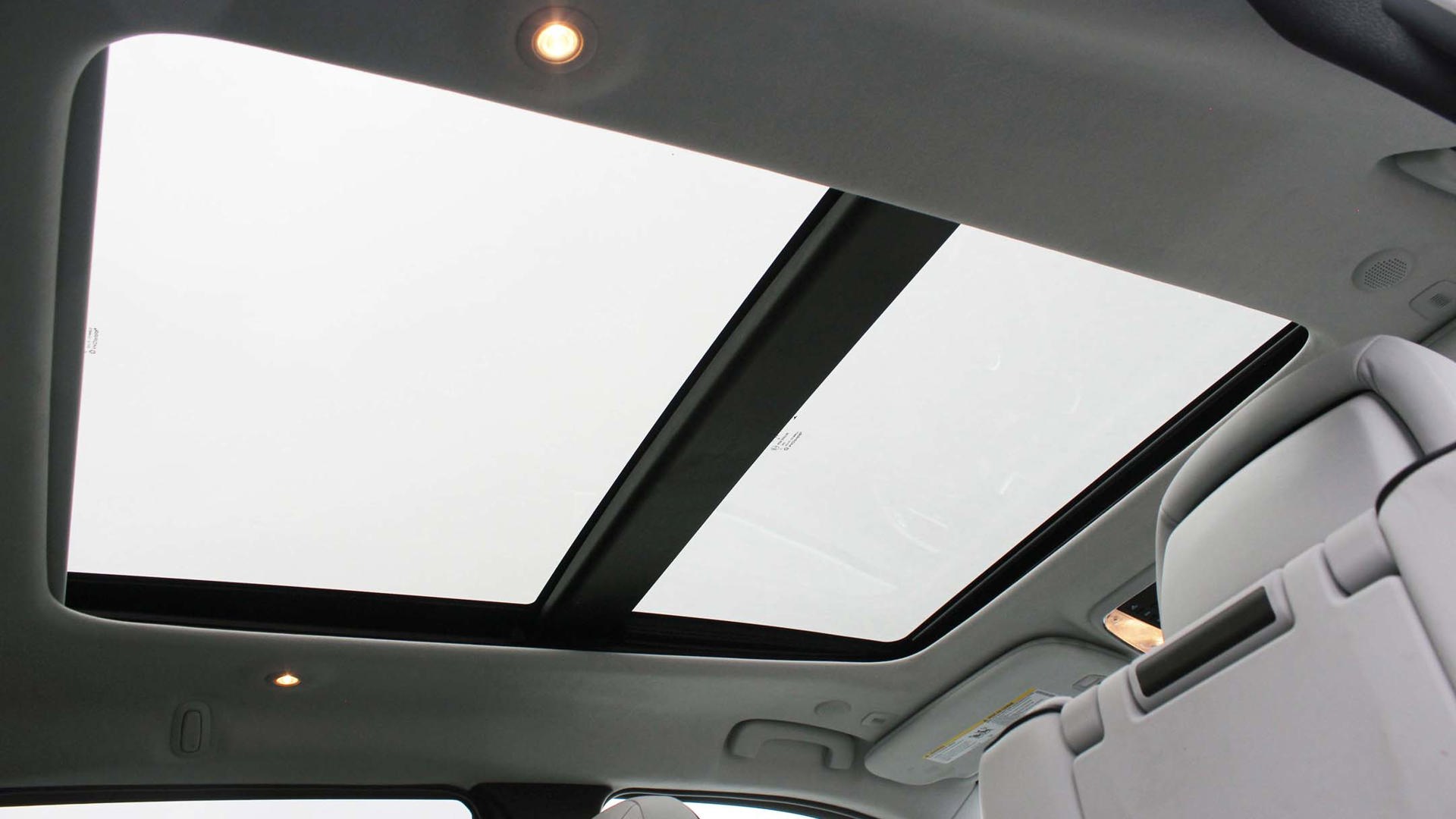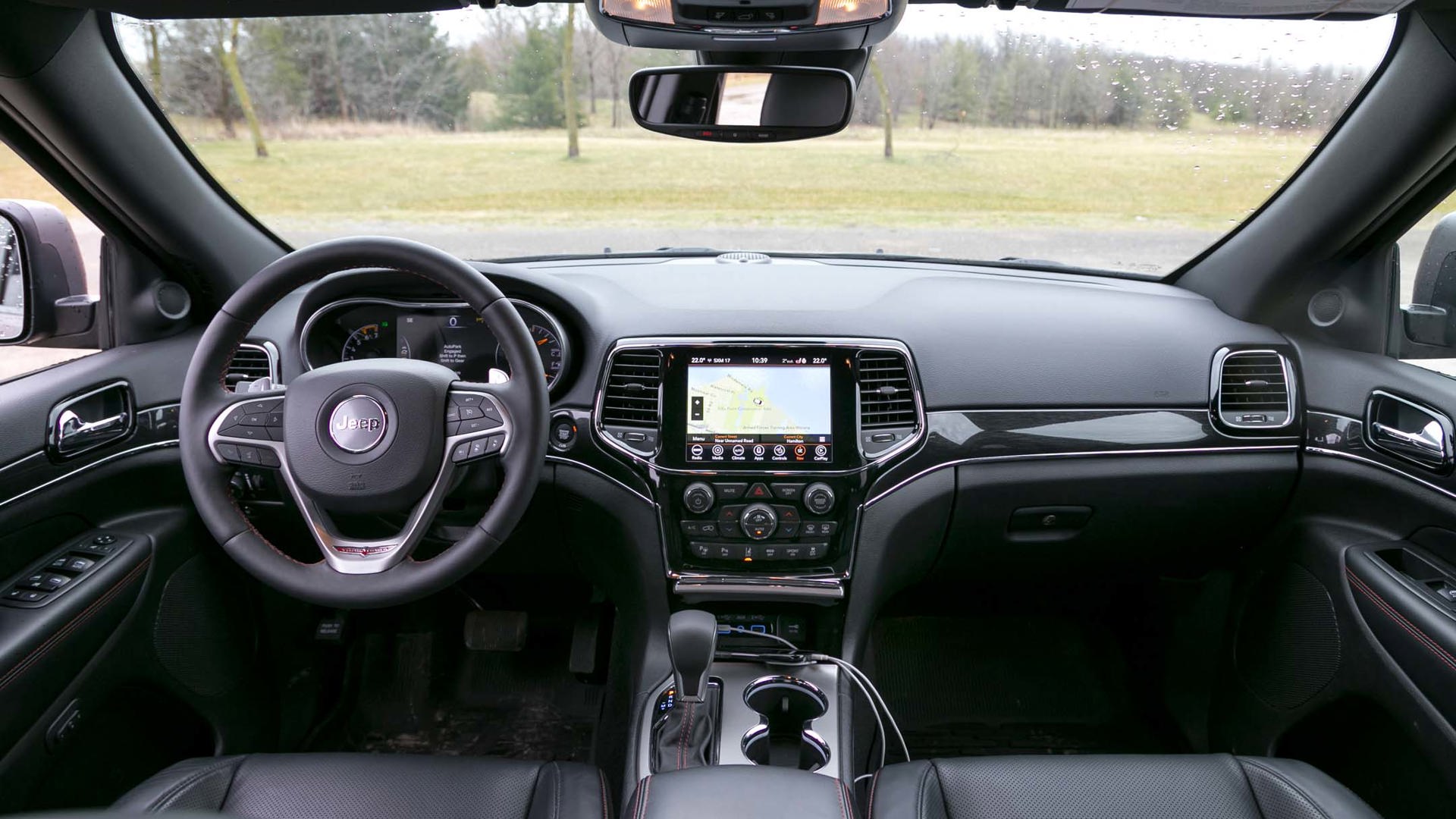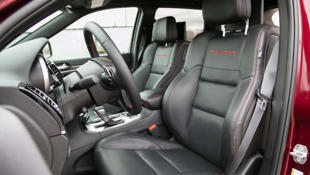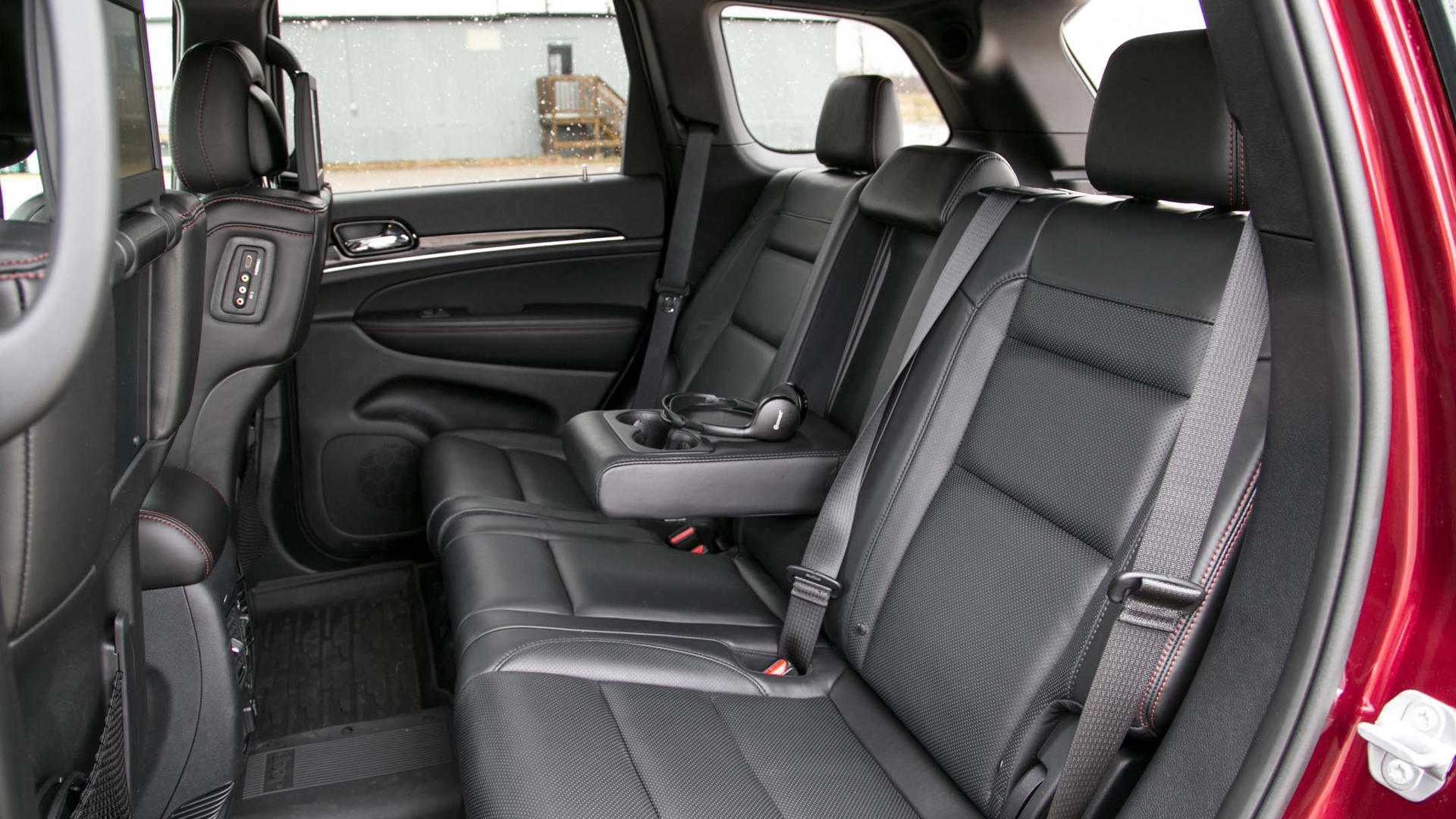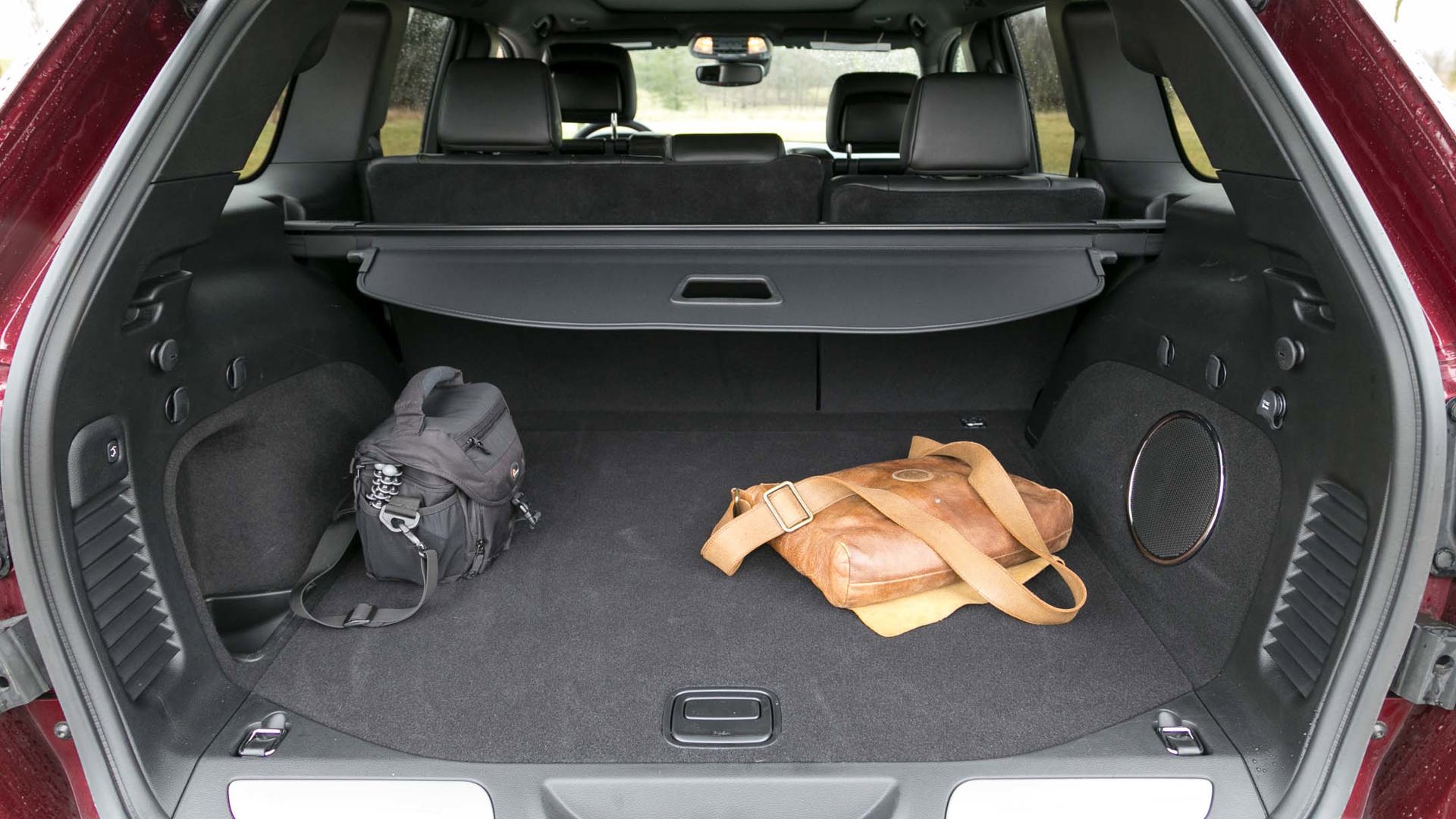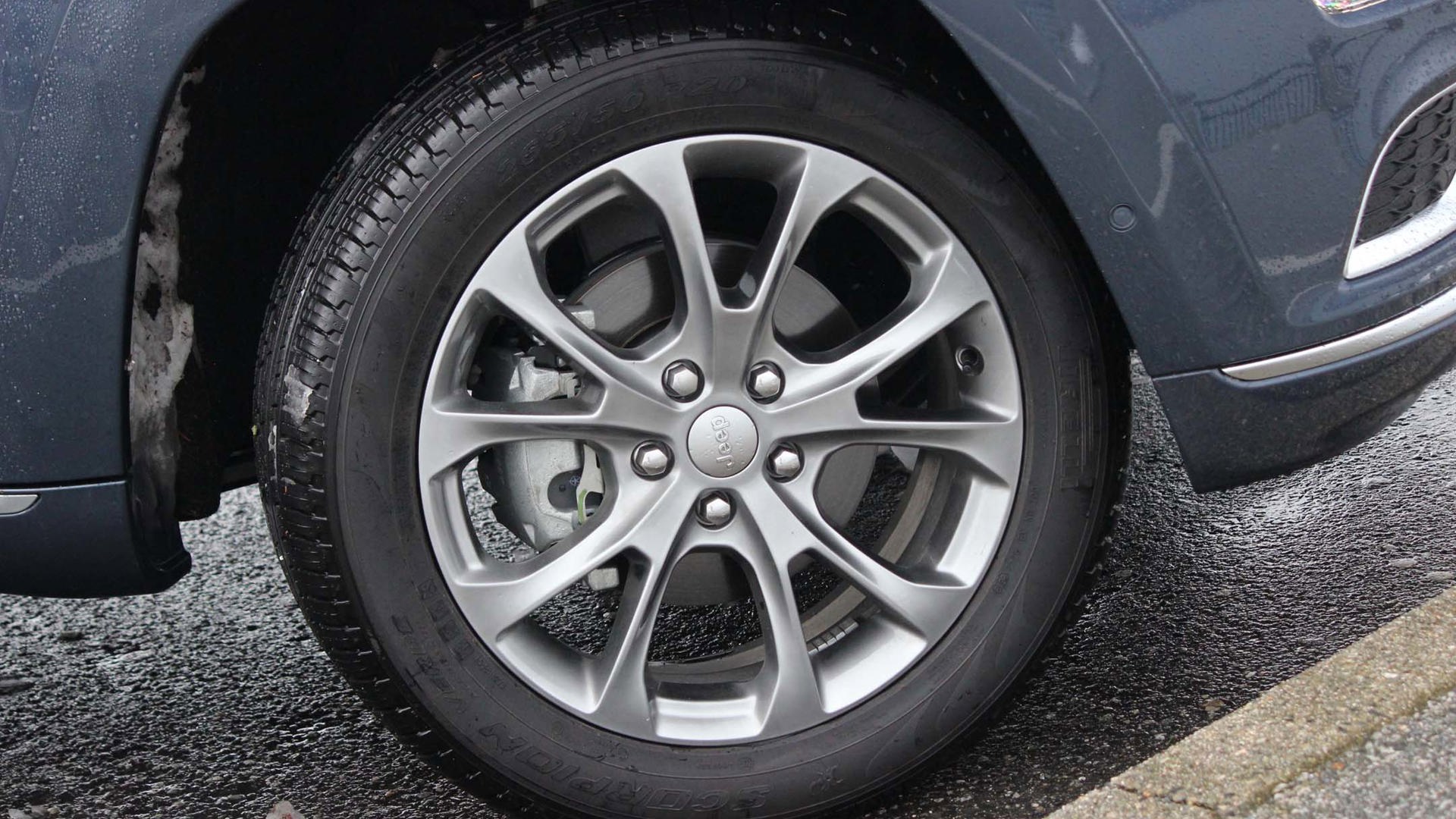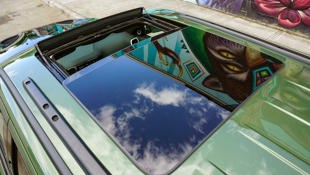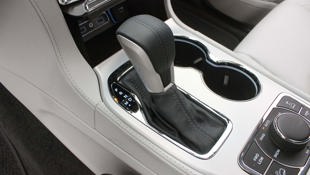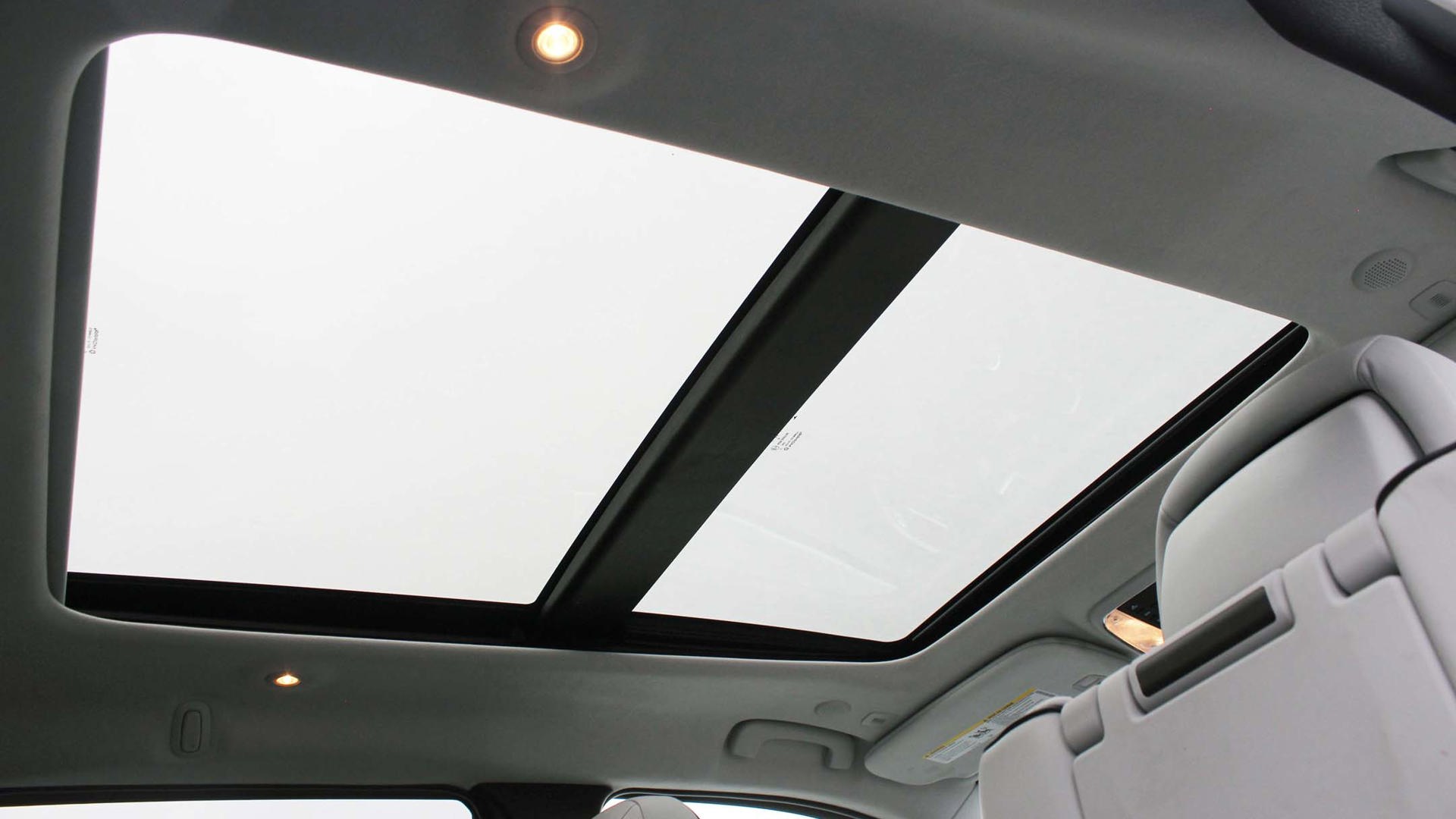Vehicle Type
Midsize SUV
History/Description
The 2014 model year brought a major update to the Jeep Grand Cherokee lineup.
After the launch of the WK2 generation for model-year 2011, the 2014 update brought a multitude of upgrades designed to drive further value for shoppers, increase selection, and turn up the dial on feature content and technology.
A new diesel-powered V6 engine option was available, boasting best-in-class towing capacity of 3,357 kg (7,400 lb). A new transmission improved efficiency, performance, and off-road capability. A high-end Summit model also joined the lineup as the most luxurious version of the Grand Cherokee to date. The long-running two-row rounded out its 2014 upgrades with revised exterior styling and increased safety features across the model range.
A new eco mode was added, allowing drivers to scale back throttle response in the name of efficiency with any of the model’s engines, including the proven and popular 3.6L V6, a 5.7L V8, and the new 3.0L diesel.
The terrain management system was refined to offer five settings and advanced off-road speed control. Meanwhile, available air suspension could add more than 100 mm (3.9 in) of ground clearance with the push of a button, or lower the Grand Cherokee’s body for improved aerodynamics in eco mode.
What Owners Like
The Grand Cherokee is a jack of all trades. Owners and reviewers tend to appreciate its ability to transition comfortably from condition to condition, turning in consistent ride quality and confidence on the road or trails, and in any weather.
Many owners appreciate the strong torque and reasonable fuel consumption of the diesel engine, and enthusiasts willing to foot the fuel bill tend to appreciate the performance of the V8. Push-button access to a variety of confidence-enhancing tech helps round out the package.
What Owners Dislike
Some owners wish for more logical placement of certain controls near the driver, higher safety scores, and a roomier rear seat for larger occupants. Others wish for higher performance from the V8 engine in exchange for its fuel bill. Finally, shoppers looking for a three-row model will need to look elsewhere, with Jeep finally returning to the three-row segment in 2021 with the Grand Cherokee L and Wagoneer and Grand Wagoneer models.
Test-driving shoppers should be aware of several trouble areas reported by some Grand Cherokee owners, which we’ll outline below. The following tips are designed to help you make better use of your test drive time with the goal of finding the best used Grand Cherokee possible for the dollar.
Sunroof Inspection
Numerous owners have reported trouble with the sunroofs on their Grand Cherokees, mostly dealing with unwanted squeaks, rattles, buzzing, or clicking sounds that may be more apparent in certain temperature ranges, or while driving over certain surfaces. Other owners have reported non-functional sunroofs that don’t respond to their switches.
On your test drive, be on the lookout for unwanted noises from the sunroof and ceiling liner overhead. Be sure to quiet the cabin and listen closely while driving over some rough surfaces. Open and close the sunroof – and sunshade – several times. In any case of non-functionality, unwanted noises, or other issues, plan to have the vehicle inspected by a professional before you buy, as problems like these can reduce resale value and overall enjoyment, and cost you money.
Most of the Grand Cherokee’s common sunroof-related problems seem to be easily addressed with the use of improved fasteners, cleaning and lubrication, or adjustment and tightening of various components that hold it in place. In some cases, wiring connectors may need to be inspected and replaced, which can involve the pricey removal of the Grand Cherokee’s ceiling liner. Here’s some more reading.
Water Leaks
Some owners have reported frustrating water leaks, which can cause mould, unpleasant smells, rust, electronic system damage, and even visible dripping onto occupants while driving. Most have not.
Like all vehicles, the Grand Cherokee has a multitude of grommets, seals, passageways, drains, and trim pieces in and on its body that are designed to seal water out of the vehicle. In this discussion, owners share their stories about leaky Grand Cherokees and provide more details. This link downloads a file with diagrams and illustrations provided by Jeep to dealer technicians for use in diagnosing water leaks.
On your test drive, be on the lookout for a musty, mouldy smell from the vehicle’s interior, foggy interior windows, and any sign of dampness, standing water, or pooled water in the vehicle’s footwell areas. Check beneath the cargo hold, and carefully inspect the ceiling liner, dome lights, overhead console, and the full perimeter of the sunroof, which may exhibit wetness on or near the edges of the ceiling liner or power sunshade if a leak is present.
Most Grand Cherokee owners do not report water leaks, though they can be frustrating, expensive, and difficult to diagnose if present, so it pays to be on the lookout.
Shuddering, Shifting, Slamming
The Grand Cherokee owner’s community has done a good job of documenting various driveability issues related to its powertrains. Some owners report shuddering, inconsistent engine performance, hard or clumsy shifting from the transmission, excessive gear hunting while cruise control is in use, hesitation, difficulty selecting the correct gear at high altitude, and more. Most do not.
These issues are typically resolved with updated software designed to improve the operation of the engine and transmission of the Grand Cherokee. For instance, transmission trouble is typically addressed with a reprogramming of the transmission control module, and engine performance issues may be solved with the application of new control software, too. In addition to using a fresh and healthy battery at all times, ensuring the Grand Cherokee you’re considering is running the latest software updates helps ensure optimal performance and responsiveness.
If in doubt, get it checked out before you buy – though clumsy performance is usually a software-related issue, it could also be a sign of more serious trouble. Knowing before you buy could save you thousands of dollars.
Greasy Wheels
On your test drive, spend a moment down low, checking out the wheels and tires. Inspect the wheels for signs of damage, and confirm that all four tires are in solid shape, with plenty of tread remaining. Note that gouges or bubbles on tire sidewalls typically mean replacement tires are needed, and that uneven wear across the tread indicates an alignment issue that could cost you money.
Be sure to carefully check the inner surfaces of the wheels, including behind the spokes. If you see splattered chunks of heavy grease, similar to the photos in this thread or a greasy coating all over the inner surfaces of the wheels, it’s best to have a technician investigate before you buy.
This issue has been reported by numerous owners, and seems to be caused by an improperly fastened clamp on the Grand Cherokee’s axle boot. This boot is designed to contain a supply of lubricating grease around a rapidly spinning joint. If the seal or clamp fails, grease can be ejected and sprayed onto a wheel’s inner surface. This can result in a mess, not to mention axle problems and other unpleasantness. Though easy to fix, this problem may lead to other issues if not detected and addressed.
Electronic Shifter Recall
More than a million Grand Cherokees from this generation were recalled to address a latent safety defect with their electronic gear shifters, which could allow the vehicle to roll away – even when placed in park. Recalls are designed to correct serious safety problems, and performed free of charge in a dealer setting. Some Grand Cherokee models were affected by the recall, while others were not.
If you’re buying a Grand Cherokee that’s been regularly serviced at a dealership, chances are that this recall work (and others) has already been performed. The vehicle identification number (VIN) can be checked here to see which (if any) recall work is outstanding for the model you’re considering. Talk to a dealer service advisor if you have any concerns.
Air Suspension
Some owners have reported problems with the Jeep Grand Cherokee’s available air suspension system. Most have not. Proceed with caution if you’re considering a unit with this feature. Though the vast majority of owners do not report issues, problems with aging air suspension systems across vehicles of all types are never a good time.
On your test drive, be sure to work the system through its various ride-height levels multiple times. Be on the lookout for warning lights and error messages, and ensure that each height position you select can be engaged within a few seconds. As a bare minimum, have the system inspected professionally before you buy, as this may reveal issues that could cost you a lot of money. Purchase of an add-on warranty that covers this system is advised as well, just to be safe.
Some owners have had compressors and other system components replaced, often after time-consuming diagnosis procedures. If you’re not dead set on a model with air suspension, sticking to a Grand Cherokee with the standard suspension system may be smarter for the long haul.
Recall Work
Recalls for the Jeep Grand Cherokee can be found here.
Safety Ratings
Safety and crash test reports can be found at the links below:
